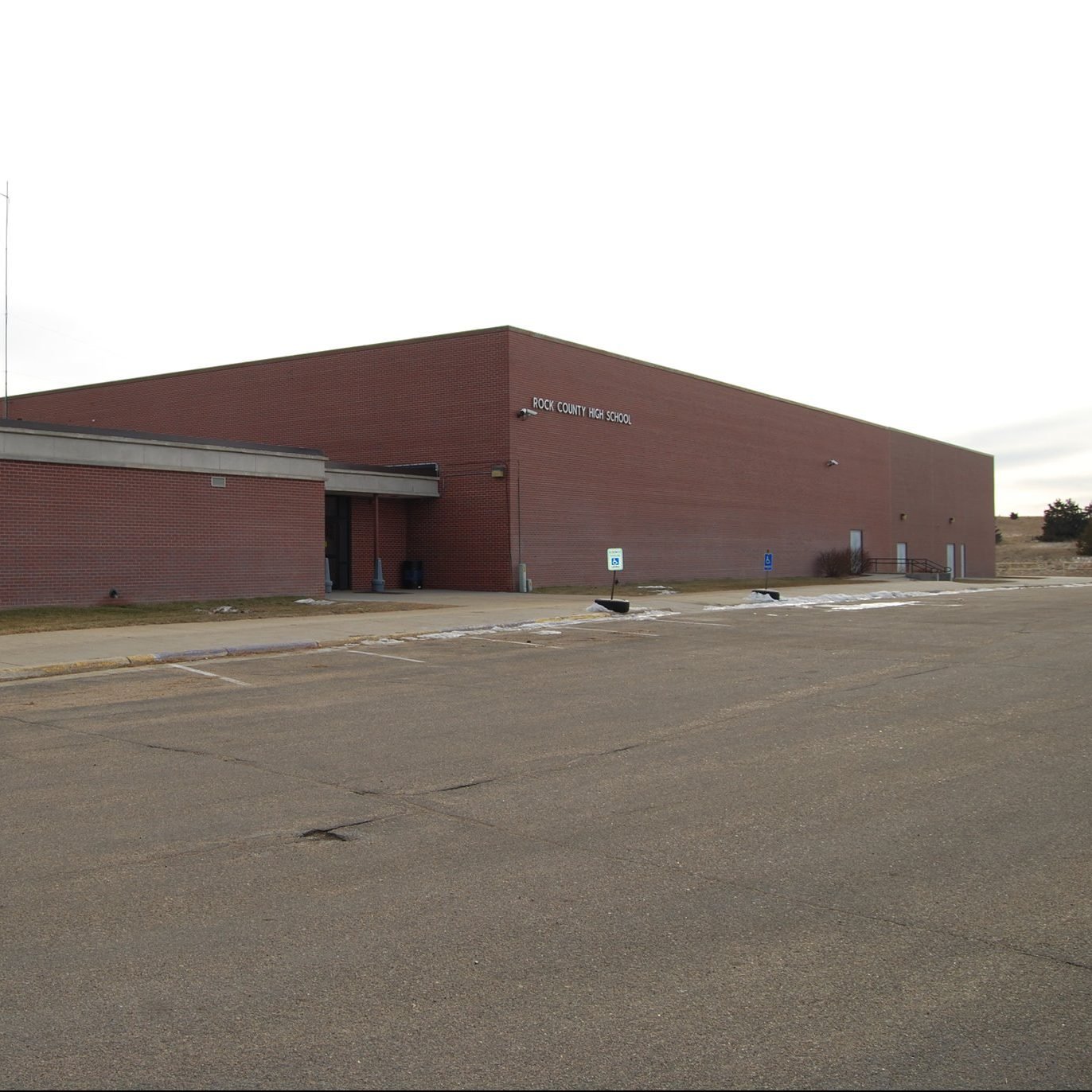

The class of 2020 college graduates had quite the different commencement ceremonies, and they went into a job market upended by the COVID-19 pandemic. Though unemployment has improved considerably since the pandemic first hit, it reached over 14% in April 2020 – a high not seen since the Great Depression.
In October 2020, according to Pew Research Center, 69% of 20 to 29-years-old who had graduated from college with a bachelor’s degree or higher during the previous spring were employed, a considerably lower figure than the 78% share in October 2019.
Once again, the age-old question of whether college is worth it has been debated. True, workers with a college education tend to earn considerably more than those with high school education, but the price of attending college has also increased considerably in recent decades, necessitating taking more and more debt.
The average cost of college – both public and private institutions – more than doubled in the past 35 years after adjusting for inflation.
To identify the most expensive college in every state, 24/7 Wall St. used data from data from the National Center for Education Statistics, ranking schools based on average net price for full-time, first-time degree-seeking undergraduates who were awarded financial aid for the 2019-20 school year. Net price includes tuition and fees, books and supplies, and on-campus room and board minus any grant, scholarship, or aid from federal, state, local governmental or institutional sources.
By and large, the schools on this list are private institutions. The cheapest college on this list is a public school, University of Wyoming, with a net price of $12,224. All other schools on this list range in price from just under $20,000 to almost $70,000. Utah’s Neumont College of Computer Science is the most expensive on the list with a net price of $69,400.
Many arts, liberal arts, and design colleges such as California Institute of the Arts, Rhode Island School of Design, and Massassuchettes’ New England Conservatory of Music are among the most expensive in their respective states. Others are affiliated with churches, such as Alaska Pacific University, Montana’s University of Providence, and Connecticut’s Sacred Heart University. (Find out which are the lowest paying jobs for college grads.)
There are also quite a few science and research universities on the list, including Arizona’s Embry-Riddle Aeronautical University – Prescott, Indiana’s Rose-Hulman Institute of Technology, and Maine’s University of New England. Compared to other, often cheaper, universities, however, most have quite high admission rates. These are the hardest colleges to get into.
Click here to see the most expensive colleges in every state.
To identify the most expensive college in every state, 24/7 Wall St. ranked states based on average net price — the cost of attendance including tuition and fees, books and supplies, and on-campus room and board less any grant, scholarship, or aid from federal, state, local governmental or institutional sources — for full-time, first-time degree-seeking undergraduates who were awarded financial aid for the 2019-20 school year with data from the National Center for Education Statistics. Only colleges that are predominantly bachelor’s-degree granting and have at least 250 students were considered.
Data used to calculate acceptance rates for the 2019-2020 school year and undergraduate enrollment as of Fall 2020 also came from the NCES. Data on the median annual earnings of students six years after entry into the institution who are working, meant to capture graduate earning potential, are for the cohort of students who entered college in the 2003-04 or 2004-05 school year and are working in the 2014-2015 calendar year. Earnings data is in 2017 dollars.

Alaska: Alaska Pacific University
> Avg. annual net price: $20,944
> Admission rate: 90.7%
> Fall 2020 undergraduate enrollment: 312
> Median annual earnings 6 yrs. post graduation: $40,200
> Located: Anchorage, AK
[in-text-ad]
Alabama: Tuskegee University
> Avg. annual net price: $36,528
> Admission rate: 61.1%
> Fall 2020 undergraduate enrollment: 2,280
> Median annual earnings 6 yrs. post graduation: $35,500
> Located: Tuskegee, AL
Arkansas: John Brown University
> Avg. annual net price: $21,578
> Admission rate: 58.9%
> Fall 2020 undergraduate enrollment: 1,820
> Median annual earnings 6 yrs. post graduation: $45,800
> Located: Siloam Springs, AR

Arizona: Embry-Riddle Aeronautical University – Prescott
> Avg. annual net price: $36,356
> Admission rate: 66.8%
> Fall 2020 undergraduate enrollment: 2,961
> Median annual earnings 6 yrs. post graduation: $66,200
> Located: Prescott, AZ
[in-text-ad-2]
California: California Institute of the Arts
> Avg. annual net price: $59,367
> Admission rate: 27.4%
> Fall 2020 undergraduate enrollment: 762
> Median annual earnings 6 yrs. post graduation: $37,900
> Located: Valencia, CA
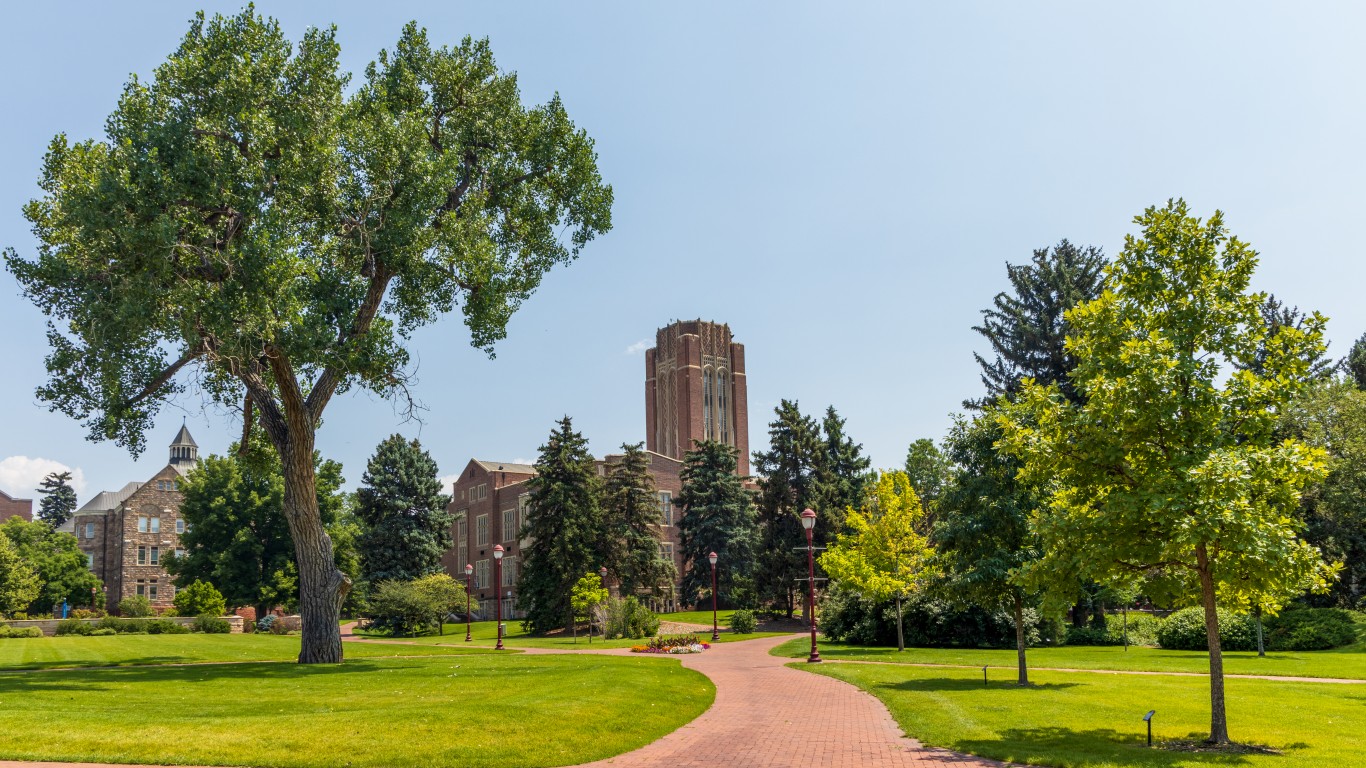
Colorado: University of Denver
> Avg. annual net price: $38,322
> Admission rate: 60.7%
> Fall 2020 undergraduate enrollment: 5,699
> Median annual earnings 6 yrs. post graduation: $56,500
> Located: Denver, CO
[in-text-ad]
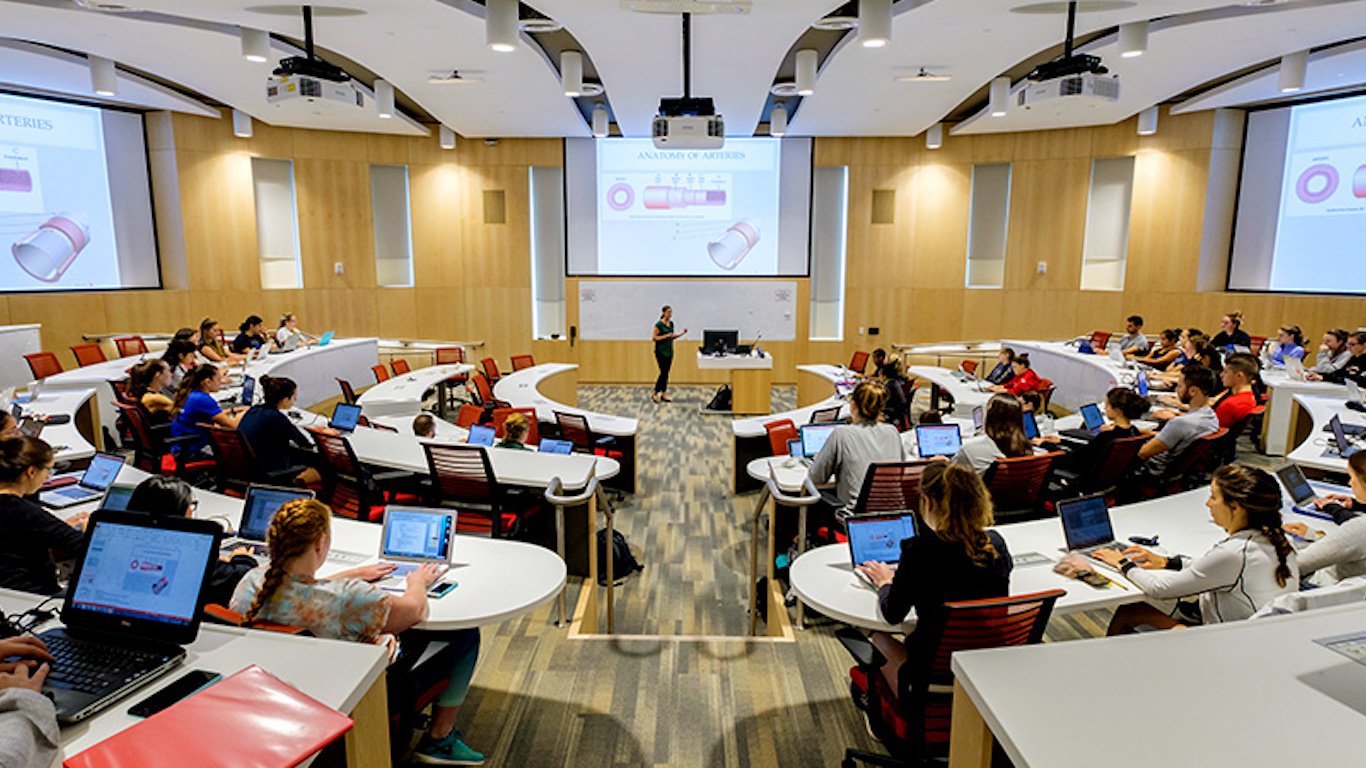
Connecticut: Sacred Heart University
> Avg. annual net price: $43,313
> Admission rate: 65.5%
> Fall 2020 undergraduate enrollment: 6,417
> Median annual earnings 6 yrs. post graduation: $56,000
> Located: Fairfield, CT
Delaware: Wesley College
> Avg. annual net price: $25,549
> Admission rate: 58.6%
> Fall 2020 undergraduate enrollment: 813
> Median annual earnings 6 yrs. post graduation: $42,900
> Located: Dover, DE
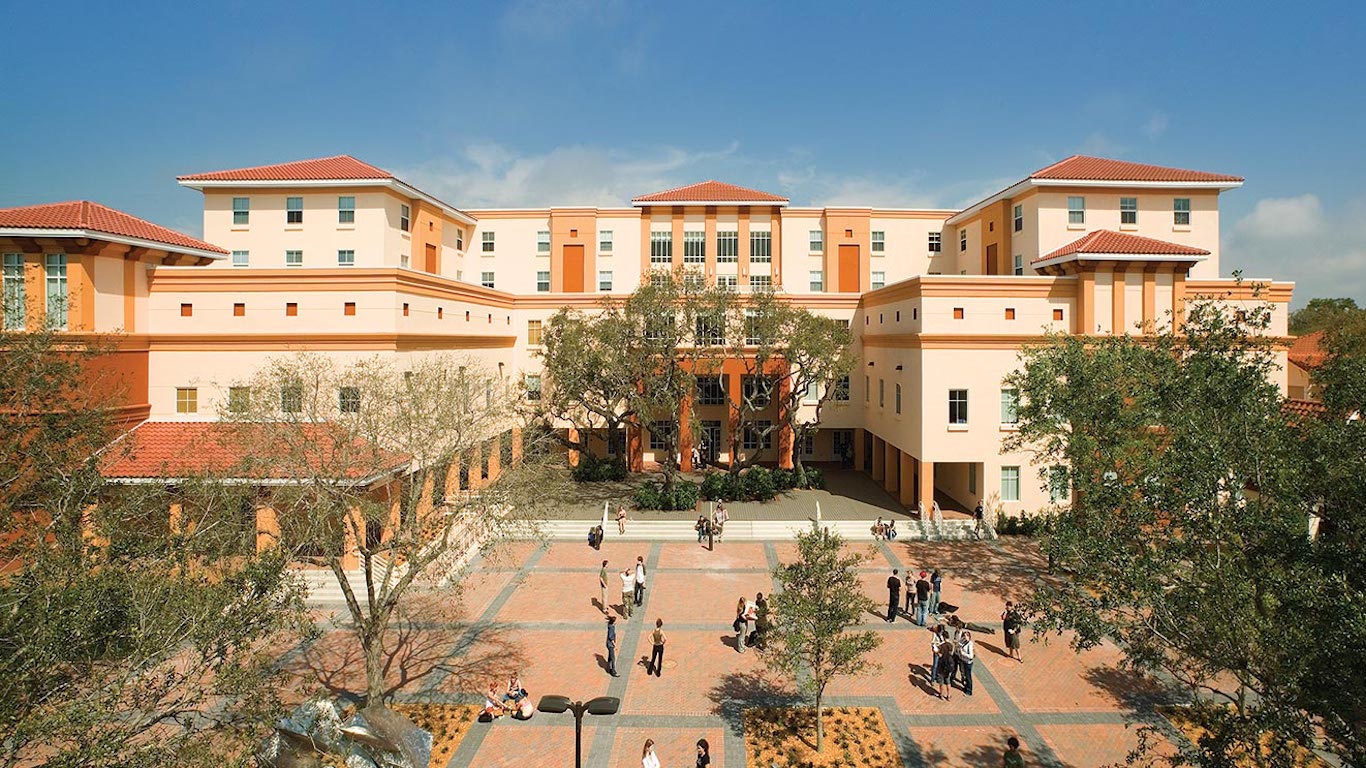
Florida: Ringling College of Art and Design
> Avg. annual net price: $53,496
> Admission rate: 68.5%
> Fall 2020 undergraduate enrollment: 1,624
> Median annual earnings 6 yrs. post graduation: $33,200
> Located: Sarasota, FL
[in-text-ad-2]

Georgia: Savannah College of Art and Design
> Avg. annual net price: $45,798
> Admission rate: 77.9%
> Fall 2020 undergraduate enrollment: 11,679
> Median annual earnings 6 yrs. post graduation: $36,400
> Located: Savannah, GA

Hawaii: Hawaii Pacific University
> Avg. annual net price: $29,827
> Admission rate: 81.4%
> Fall 2020 undergraduate enrollment: 3,800
> Median annual earnings 6 yrs. post graduation: $49,900
> Located: Honolulu, HI
[in-text-ad]
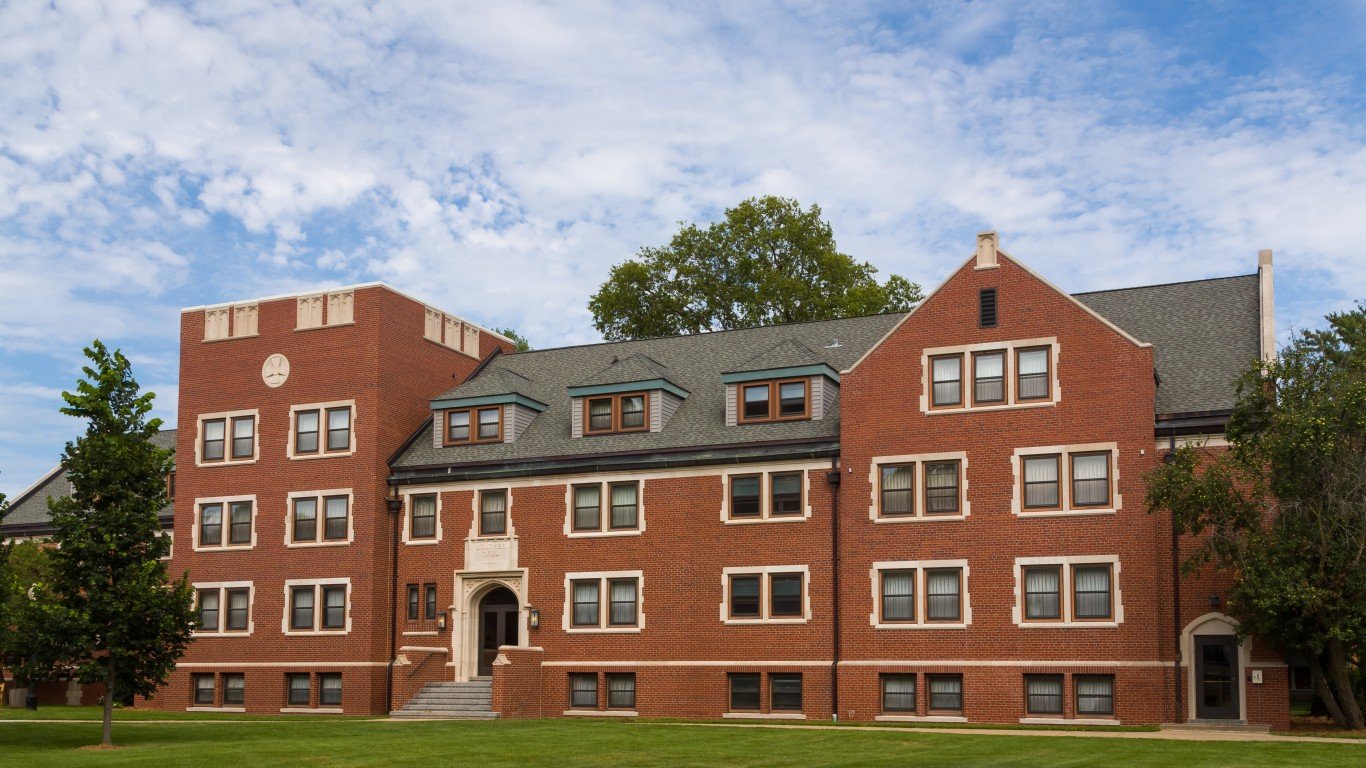
Iowa: Grinnell College
> Avg. annual net price: $32,091
> Admission rate: 19.2%
> Fall 2020 undergraduate enrollment: 1,493
> Median annual earnings 6 yrs. post graduation: $49,100
> Located: Grinnell, IA
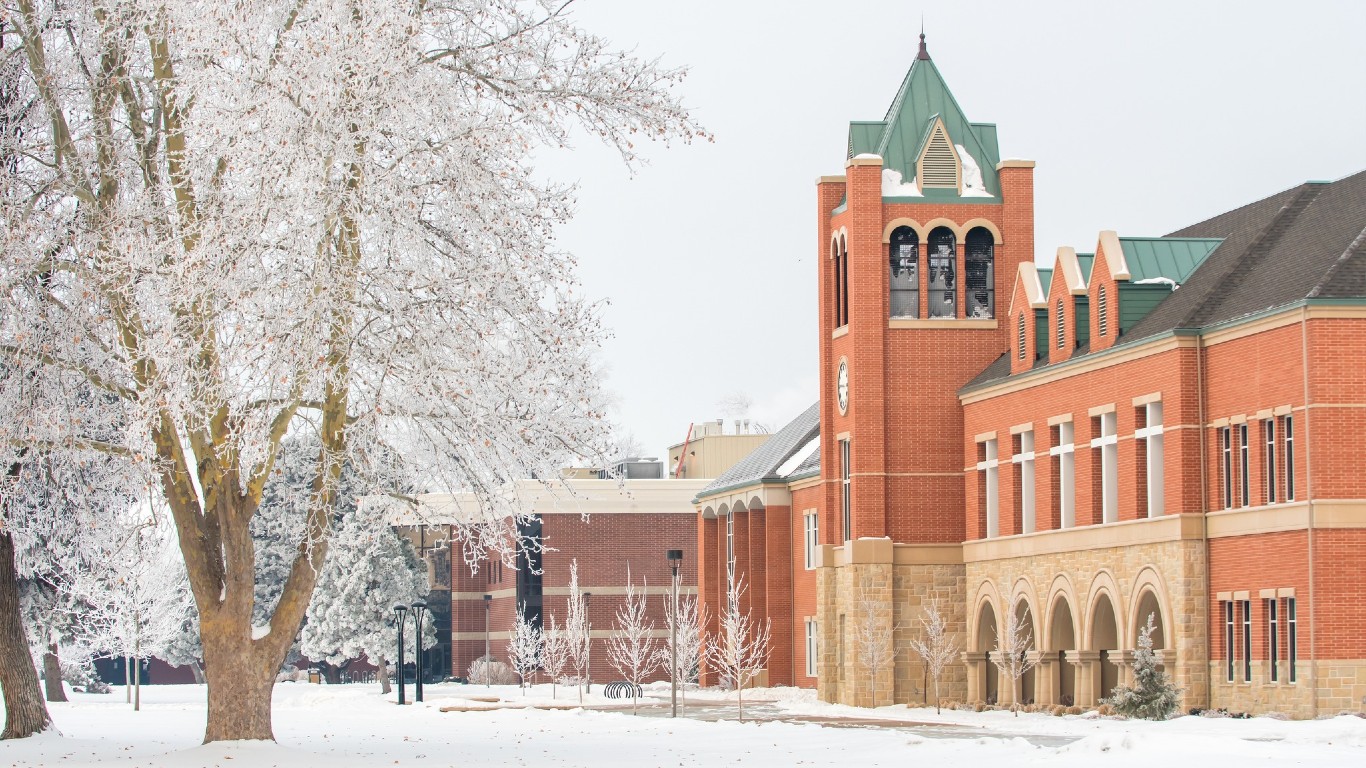
Idaho: Northwest Nazarene University
> Avg. annual net price: $21,616
> Admission rate: 76.8%
> Fall 2020 undergraduate enrollment: 1,389
> Median annual earnings 6 yrs. post graduation: $39,600
> Located: Nampa, ID

Illinois: School of the Art Institute of Chicago
> Avg. annual net price: $51,606
> Admission rate: 77.8%
> Fall 2020 undergraduate enrollment: 2,487
> Median annual earnings 6 yrs. post graduation: $33,500
> Located: Chicago, IL
[in-text-ad-2]

Indiana: Rose-Hulman Institute of Technology
> Avg. annual net price: $43,606
> Admission rate: 76.6%
> Fall 2020 undergraduate enrollment: 1,972
> Median annual earnings 6 yrs. post graduation: $80,900
> Located: Terre Haute, IN
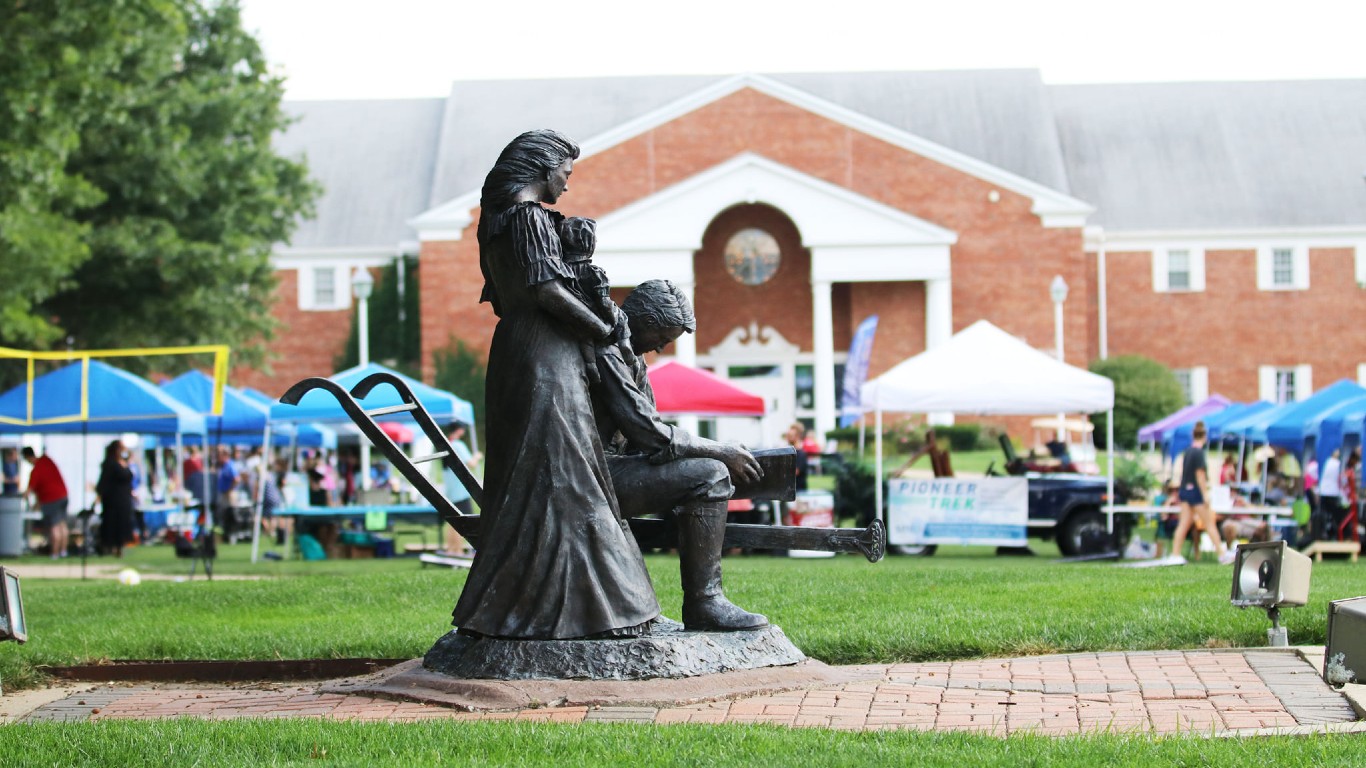
Kansas: MidAmerica Nazarene University
> Avg. annual net price: $29,406
> Admission rate: 63.8%
> Fall 2020 undergraduate enrollment: 1,222
> Median annual earnings 6 yrs. post graduation: $42,900
> Located: Olathe, KS
[in-text-ad]
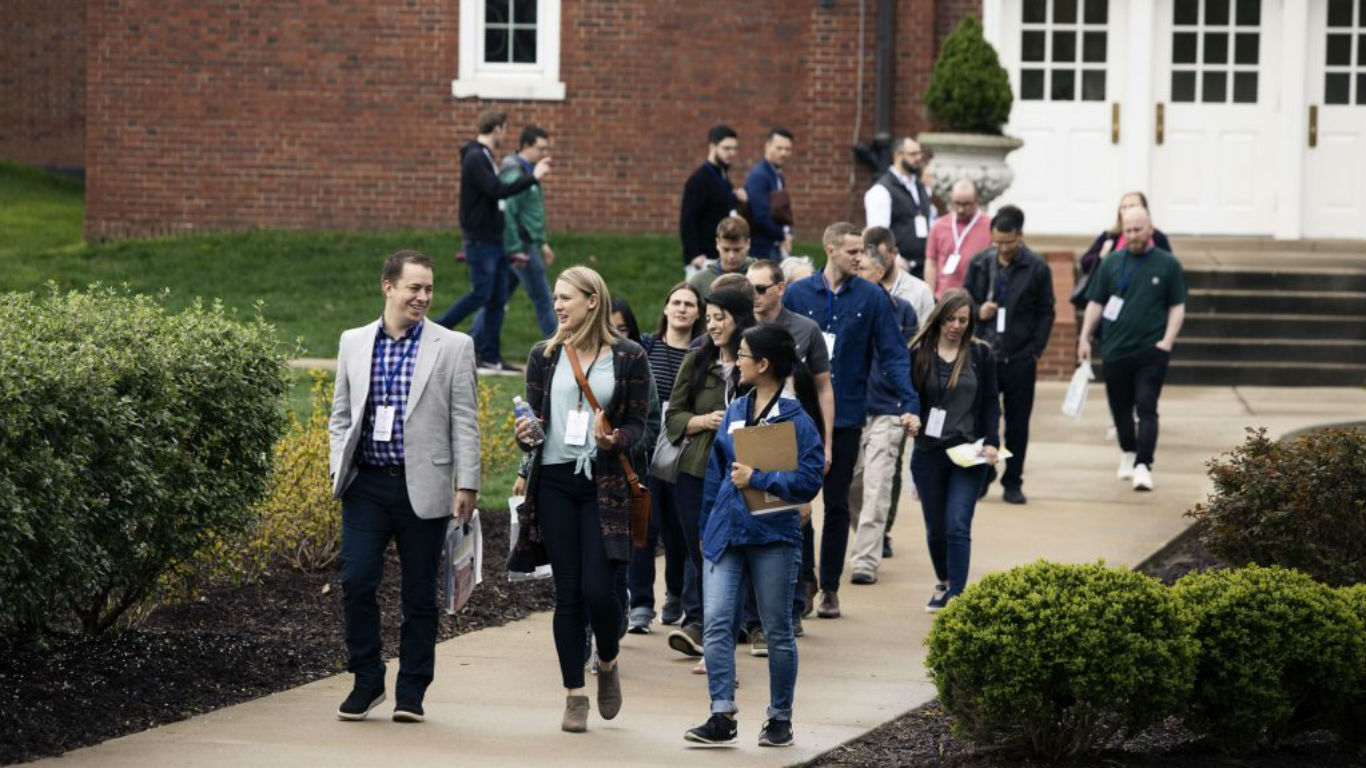
Kentucky: The Southern Baptist Theological Seminary
> Avg. annual net price: $27,314
> Admission rate: 77.3%
> Fall 2020 undergraduate enrollment: 964
> Median annual earnings 6 yrs. post graduation: N/A
> Located: Louisville, KY
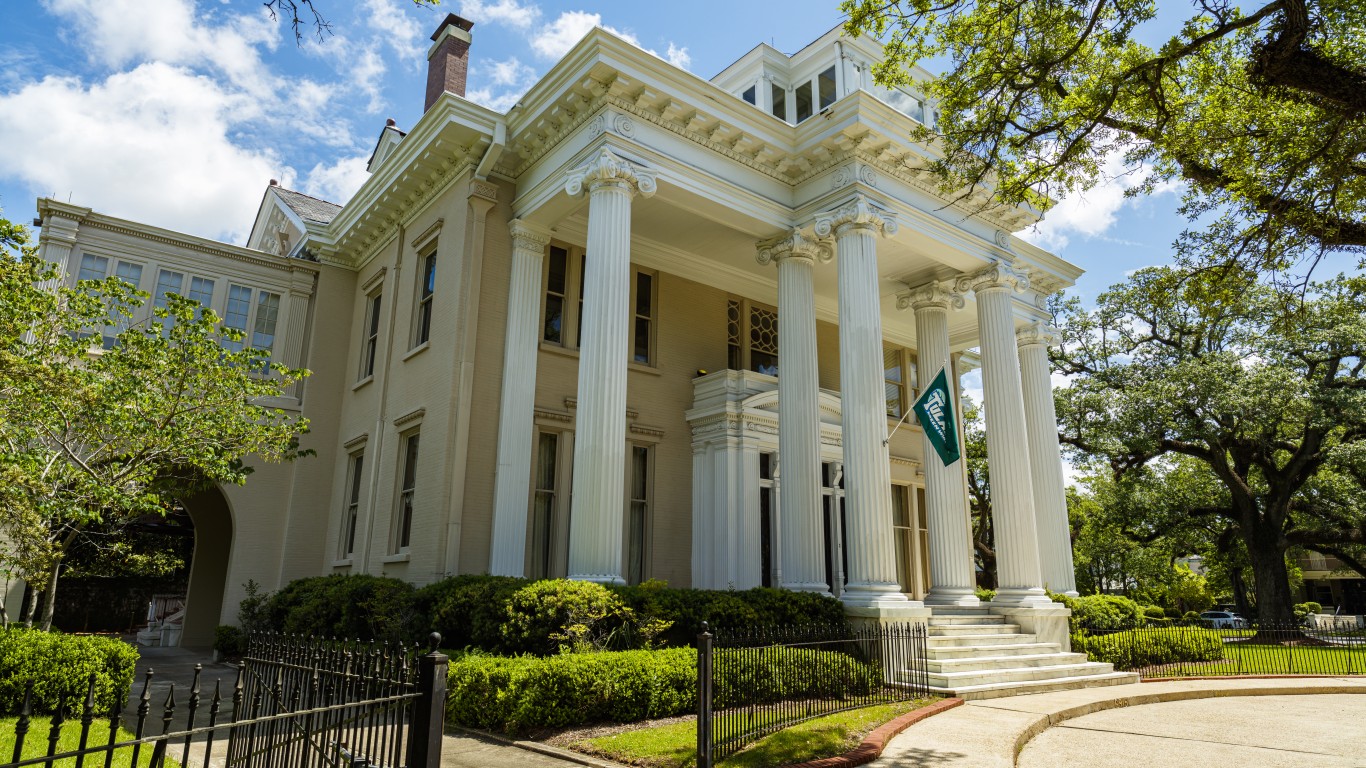
Louisiana: Tulane University of Louisiana
> Avg. annual net price: $47,413
> Admission rate: 11.1%
> Fall 2020 undergraduate enrollment: 8,537
> Median annual earnings 6 yrs. post graduation: $61,700
> Located: New Orleans, LA
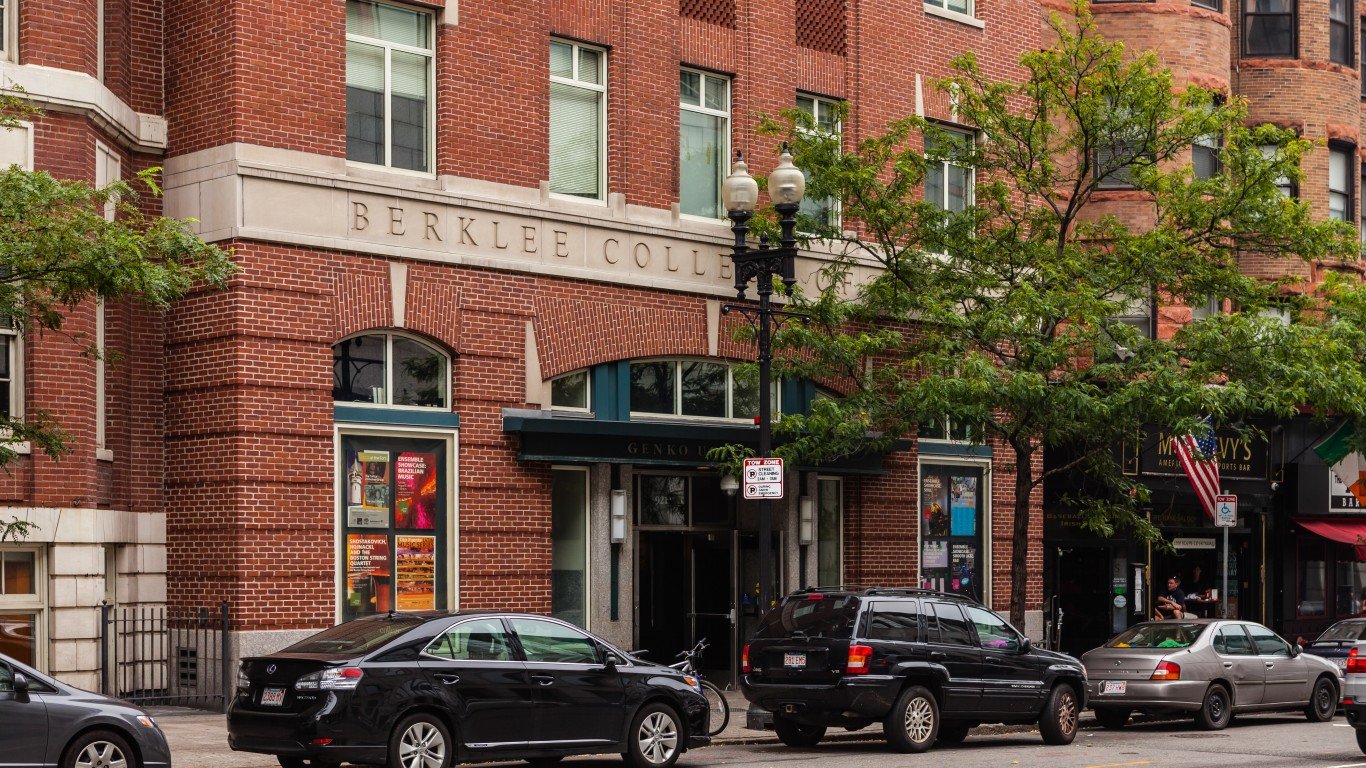
Massachusetts: The New England Conservatory of Music
> Avg. annual net price: $50,651
> Admission rate: 36.3%
> Fall 2020 undergraduate enrollment: 404
> Median annual earnings 6 yrs. post graduation: $32,100
> Located: Boston, MA
[in-text-ad-2]
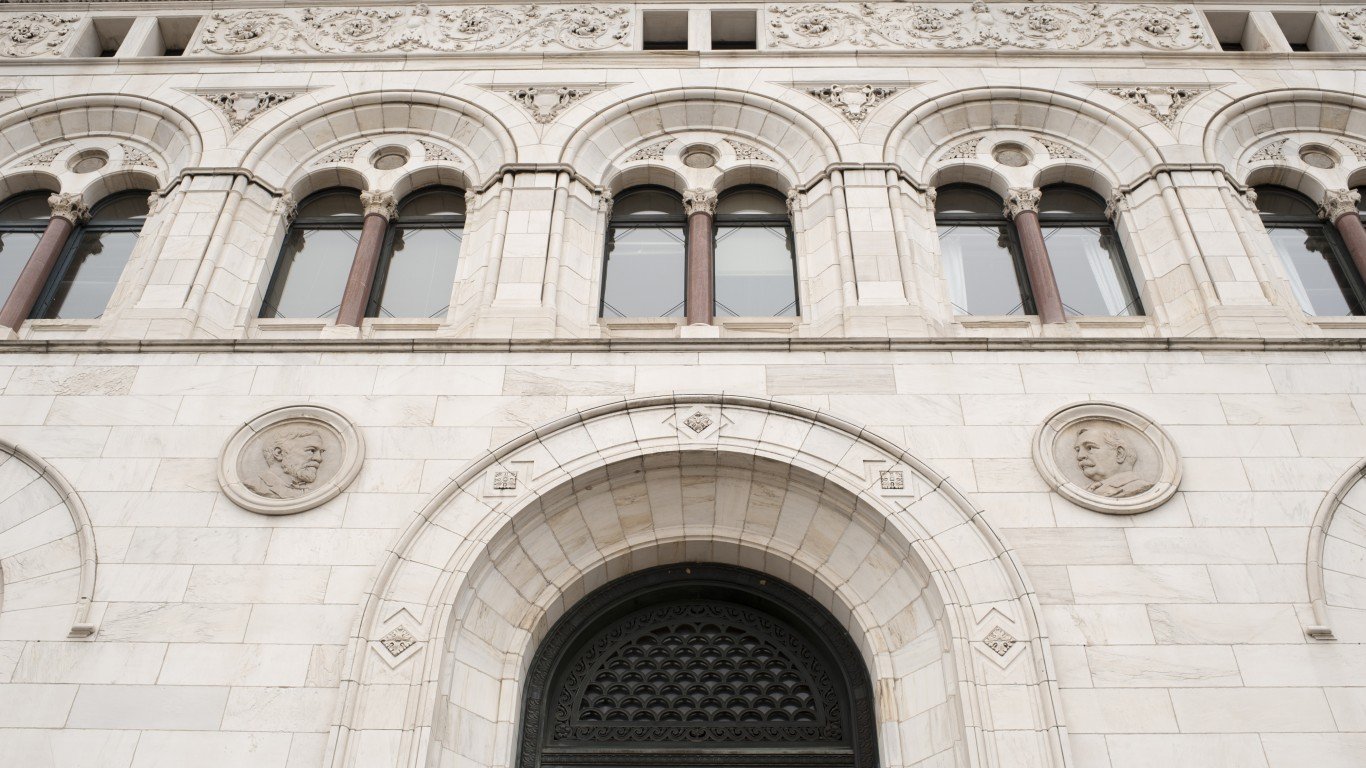
Maryland: Maryland Institute College of Art
> Avg. annual net price: $45,106
> Admission rate: 89.8%
> Fall 2020 undergraduate enrollment: 1,331
> Median annual earnings 6 yrs. post graduation: $37,300
> Located: Baltimore, MD

Maine: University of New England
> Avg. annual net price: $36,474
> Admission rate: 87.3%
> Fall 2020 undergraduate enrollment: 4,065
> Median annual earnings 6 yrs. post graduation: $46,300
> Located: Biddeford, ME
[in-text-ad]
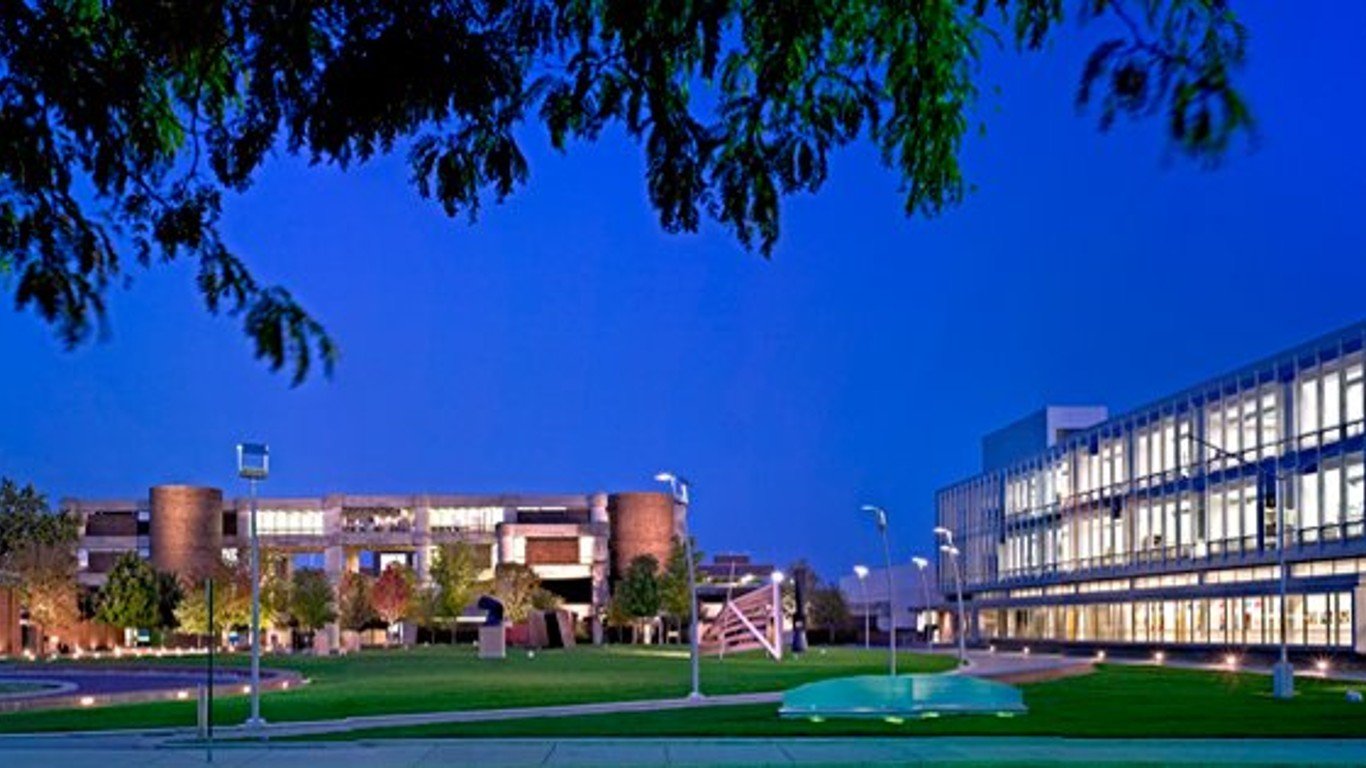
Michigan: College for Creative Studies
> Avg. annual net price: $36,203
> Admission rate: 55.4%
> Fall 2020 undergraduate enrollment: 1,462
> Median annual earnings 6 yrs. post graduation: $44,100
> Located: Detroit, MI
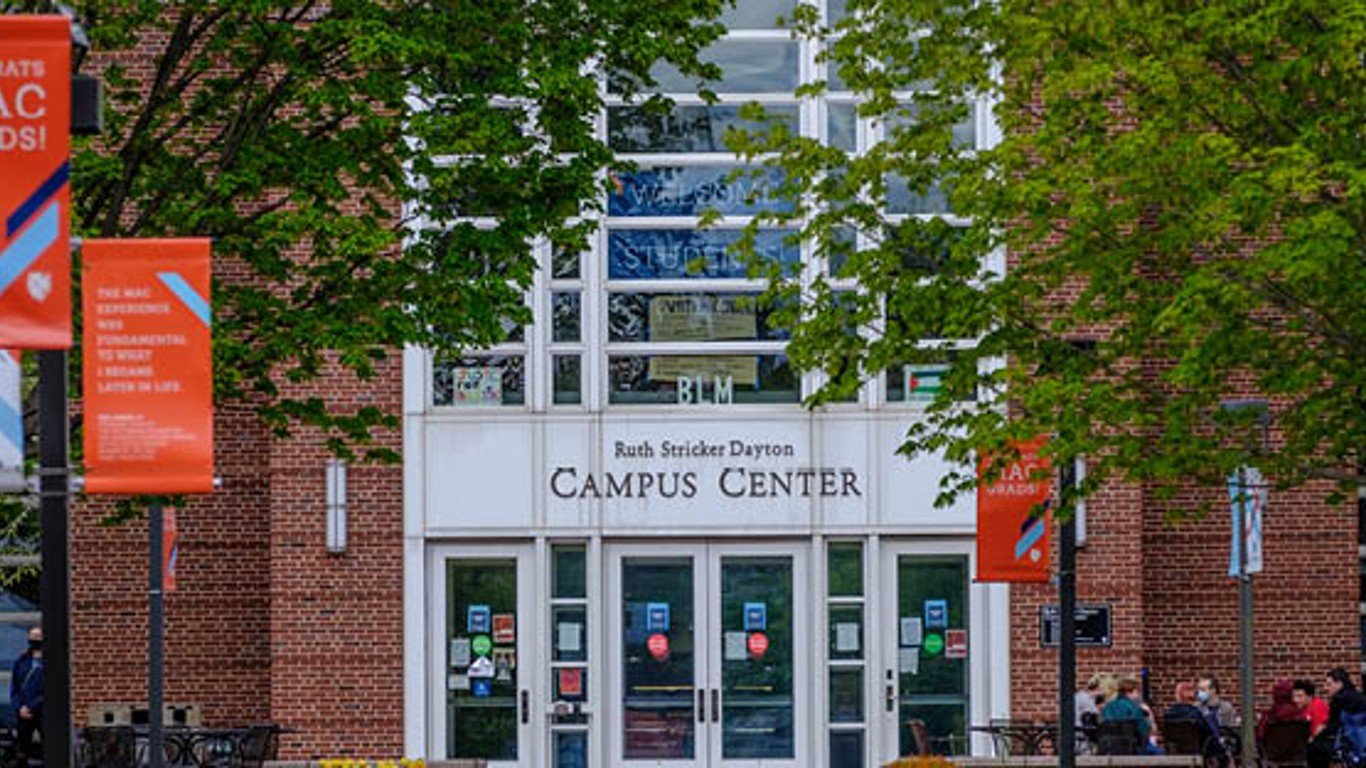
Minnesota: Macalester College
> Avg. annual net price: $35,589
> Admission rate: 38.7%
> Fall 2020 undergraduate enrollment: 2,049
> Median annual earnings 6 yrs. post graduation: $47,600
> Located: Saint Paul, MN
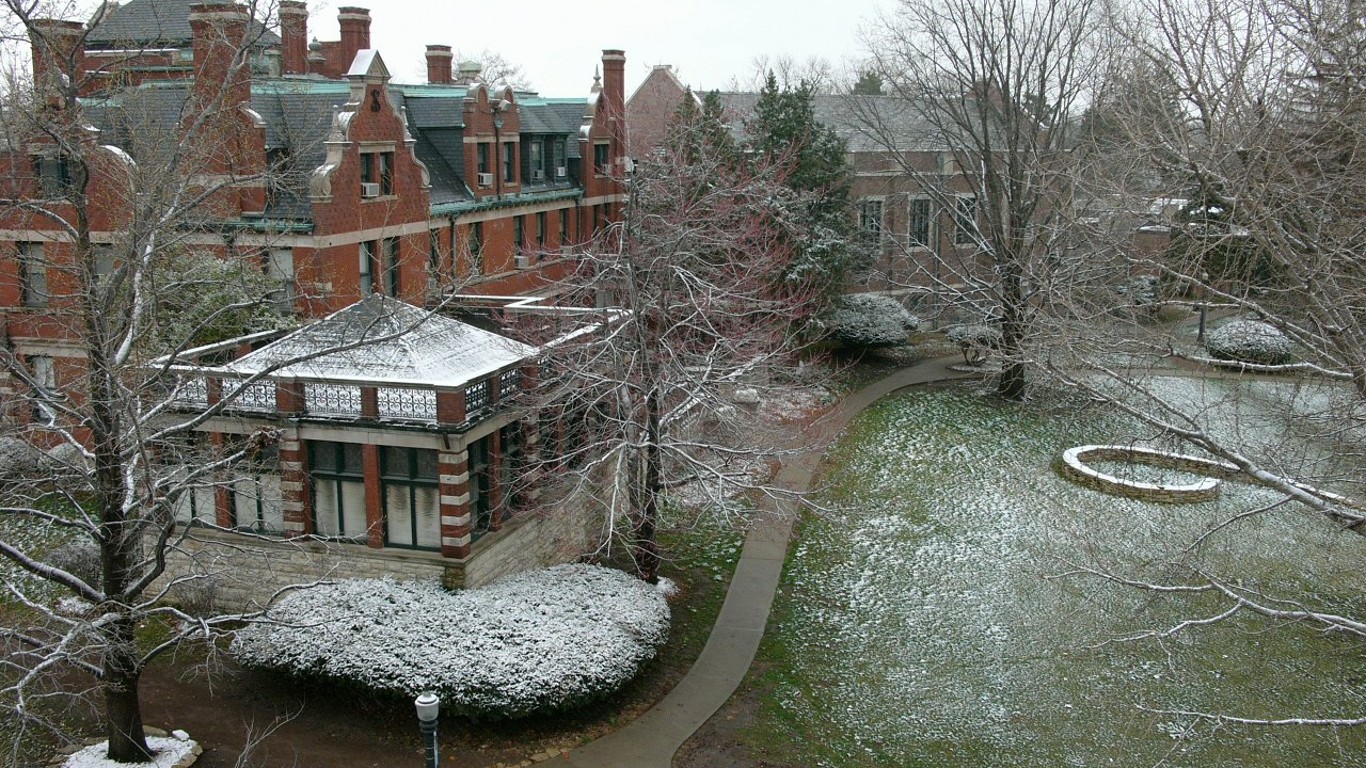
Missouri: Kansas City Art Institute
> Avg. annual net price: $29,566
> Admission rate: 59.1%
> Fall 2020 undergraduate enrollment: 698
> Median annual earnings 6 yrs. post graduation: $31,200
> Located: Kansas City, MO
[in-text-ad-2]
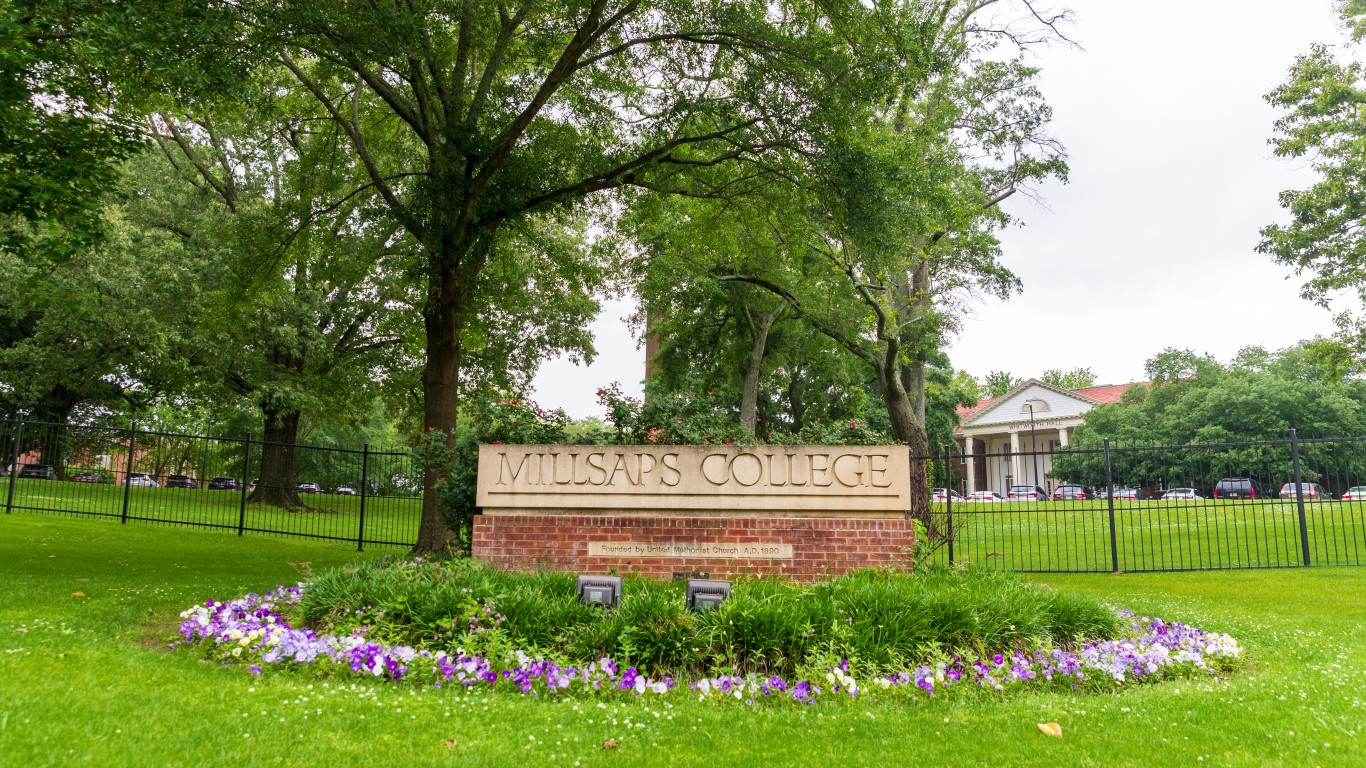
Mississippi: Millsaps College
> Avg. annual net price: $24,263
> Admission rate: 69.8%
> Fall 2020 undergraduate enrollment: 669
> Median annual earnings 6 yrs. post graduation: $48,100
> Located: Jackson, MS
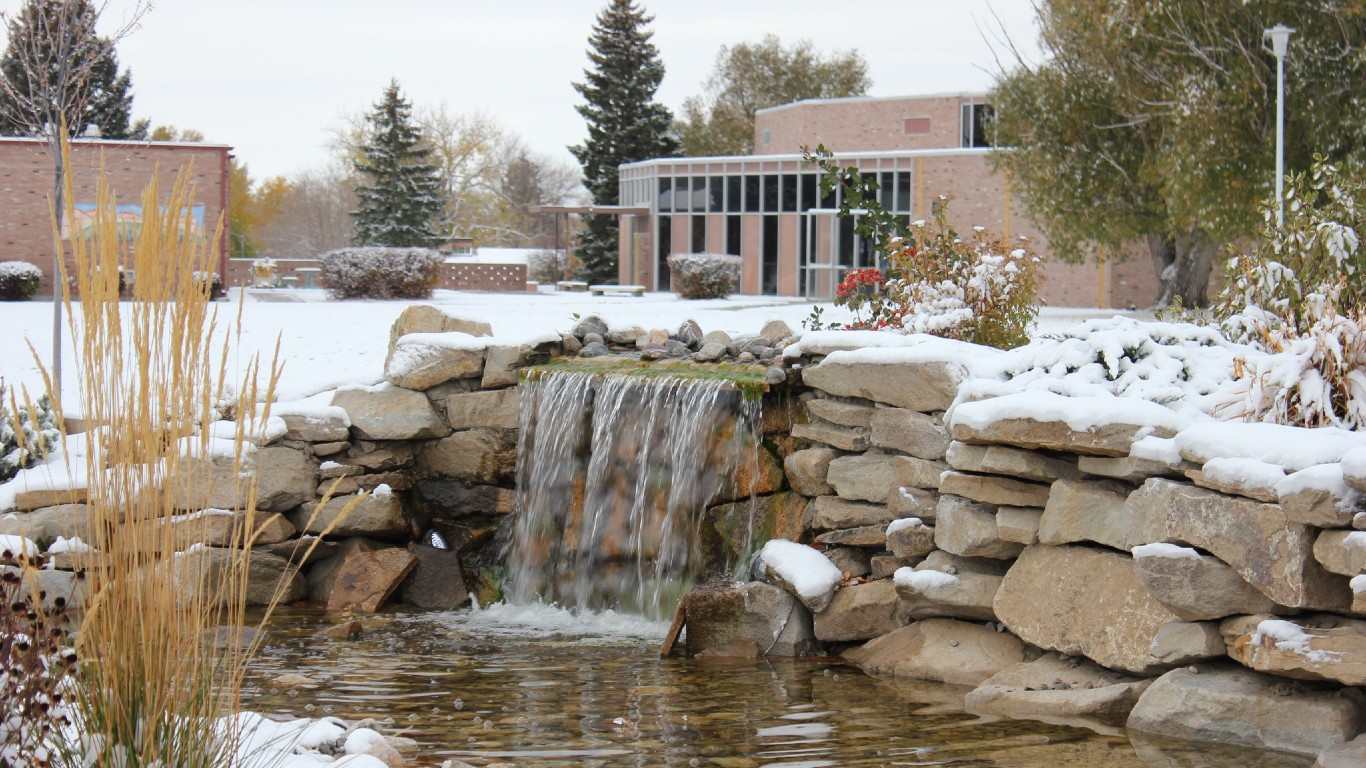
Montana: University of Providence
> Avg. annual net price: $25,023
> Admission rate: 98.5%
> Fall 2020 undergraduate enrollment: 790
> Median annual earnings 6 yrs. post graduation: $32,500
> Located: Great Falls, MT
[in-text-ad]
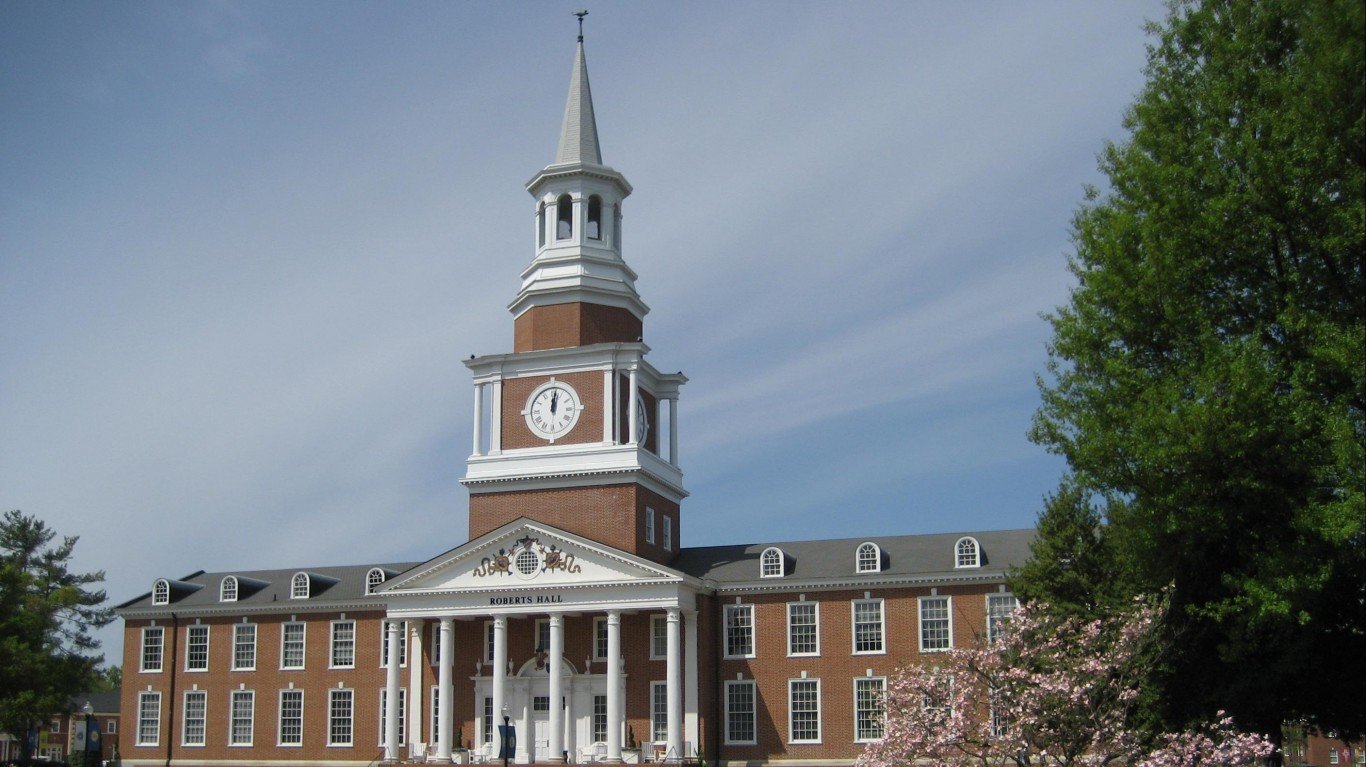
North Carolina: High Point University
> Avg. annual net price: $40,719
> Admission rate: 77.0%
> Fall 2020 undergraduate enrollment: 4,628
> Median annual earnings 6 yrs. post graduation: $39,000
> Located: High Point, NC
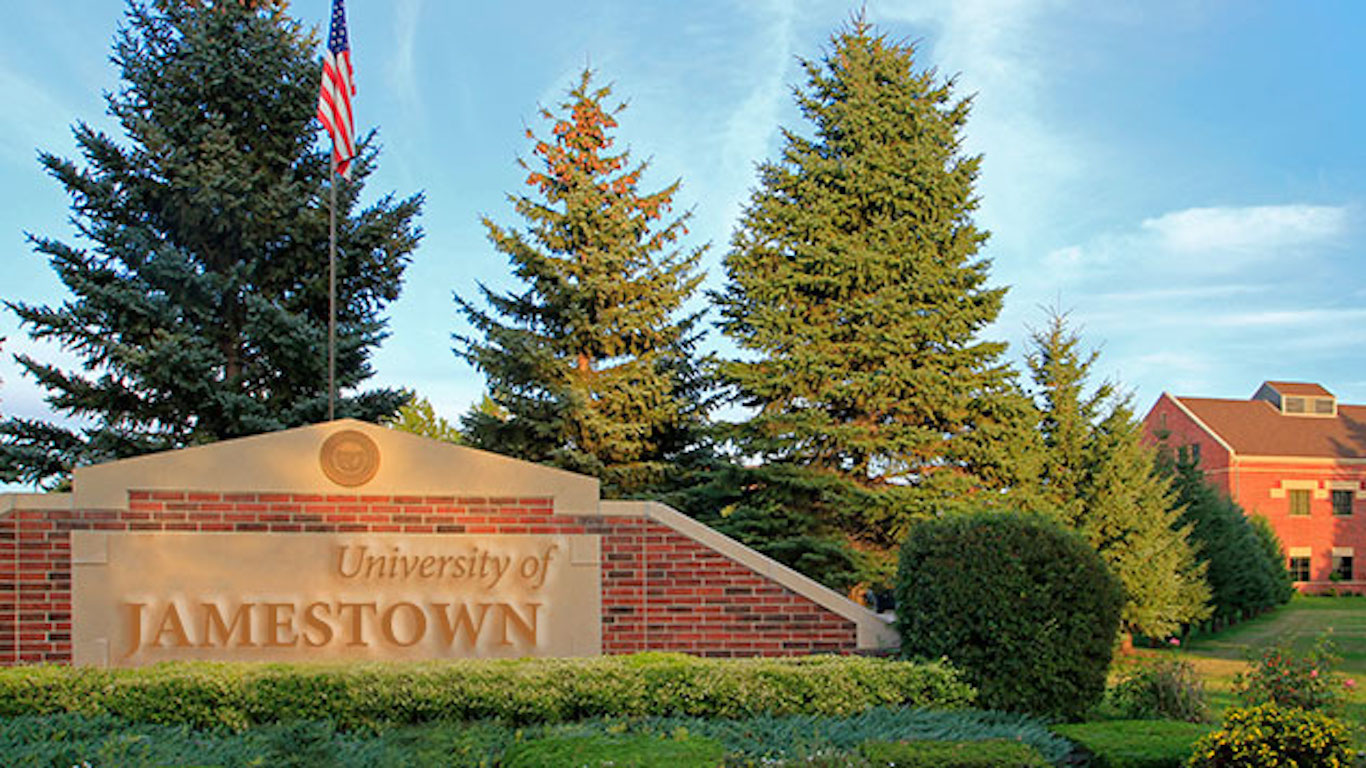
North Dakota: University of Jamestown
> Avg. annual net price: $19,744
> Admission rate: 71.9%
> Fall 2020 undergraduate enrollment: 912
> Median annual earnings 6 yrs. post graduation: $43,800
> Located: Jamestown, ND
Nebraska: Creighton University
> Avg. annual net price: $32,355
> Admission rate: 64.0%
> Fall 2020 undergraduate enrollment: 4,458
> Median annual earnings 6 yrs. post graduation: $59,700
> Located: Omaha, NE
[in-text-ad-2]
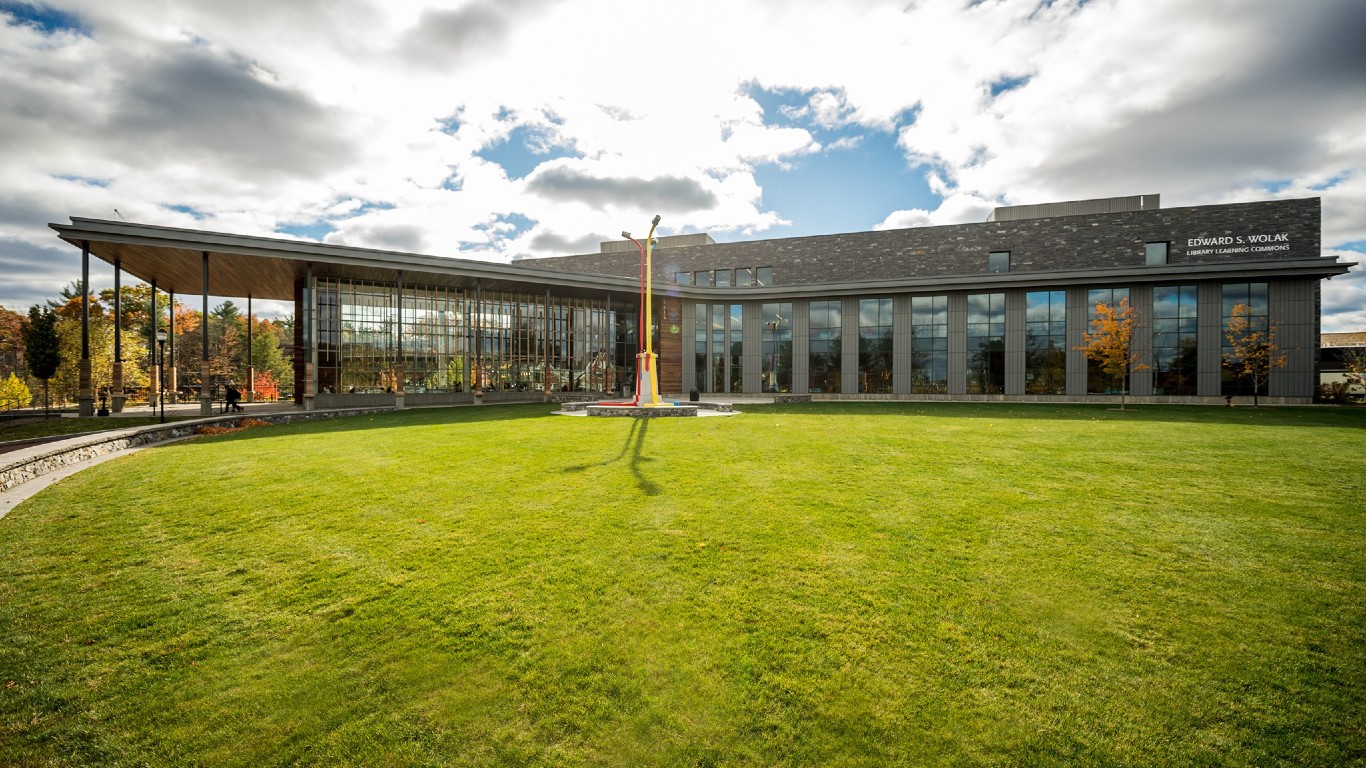
New Hampshire: Southern New Hampshire University
> Avg. annual net price: $41,217
> Admission rate: 93.5%
> Fall 2020 undergraduate enrollment: 111,599
> Median annual earnings 6 yrs. post graduation: $45,400
> Located: Manchester, NH

New Jersey: Stevens Institute of Technology
> Avg. annual net price: $40,303
> Admission rate: 53.1%
> Fall 2020 undergraduate enrollment: 3,791
> Median annual earnings 6 yrs. post graduation: $89,200
> Located: Hoboken, NJ
[in-text-ad]
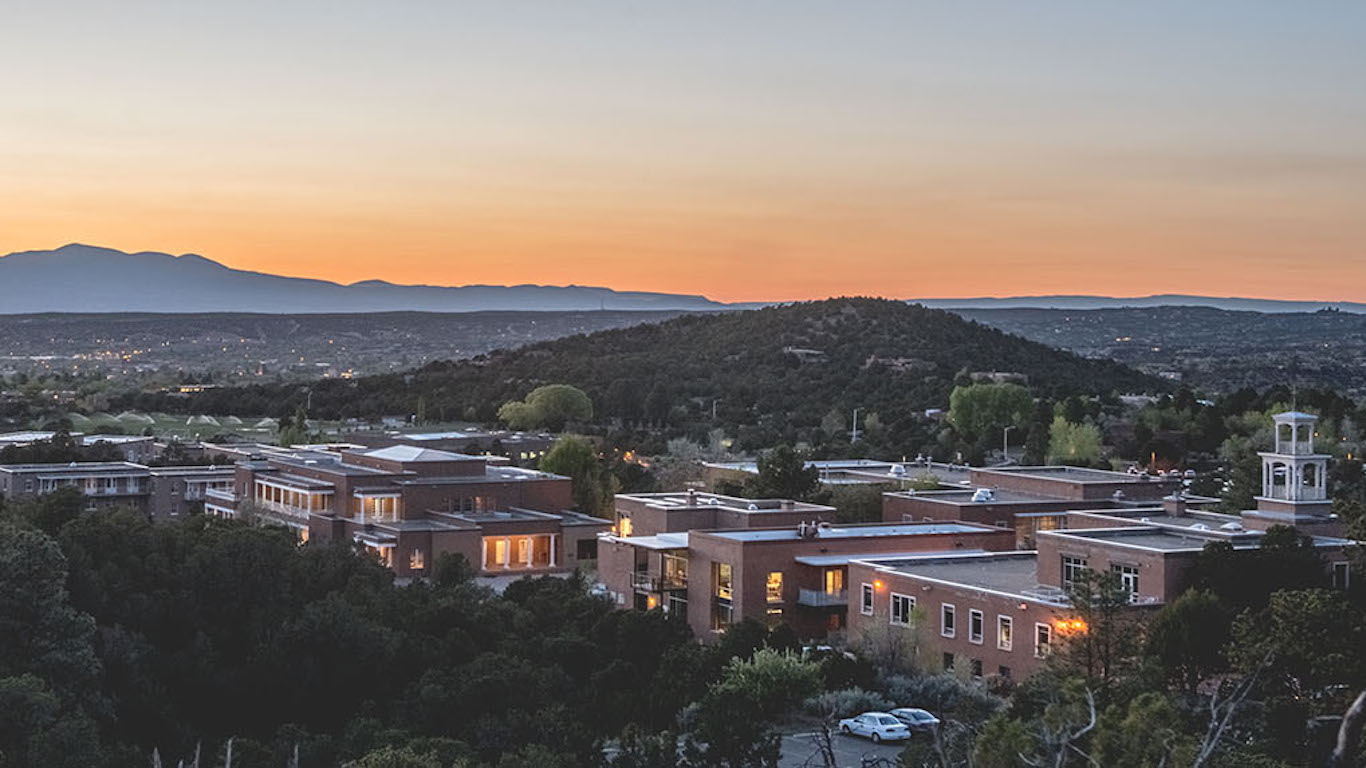
New Mexico: St. John’s College
> Avg. annual net price: $26,913
> Admission rate: 68.9%
> Fall 2020 undergraduate enrollment: 268
> Median annual earnings 6 yrs. post graduation: $33,500
> Located: Santa Fe, NM
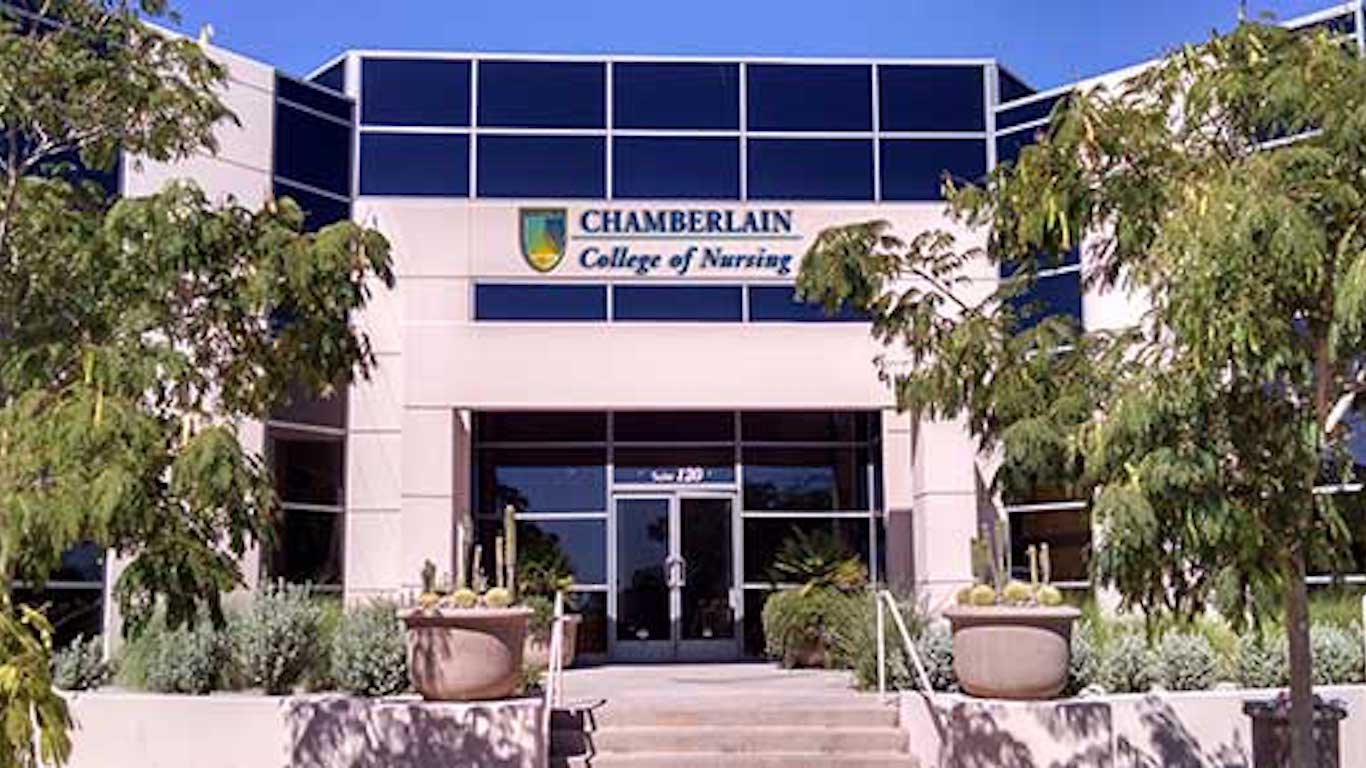
Nevada: Chamberlain University – Nevada
> Avg. annual net price: $34,580
> Admission rate: 83.3%
> Fall 2020 undergraduate enrollment: 508
> Median annual earnings 6 yrs. post graduation: N/A
> Located: Las Vegas, NV
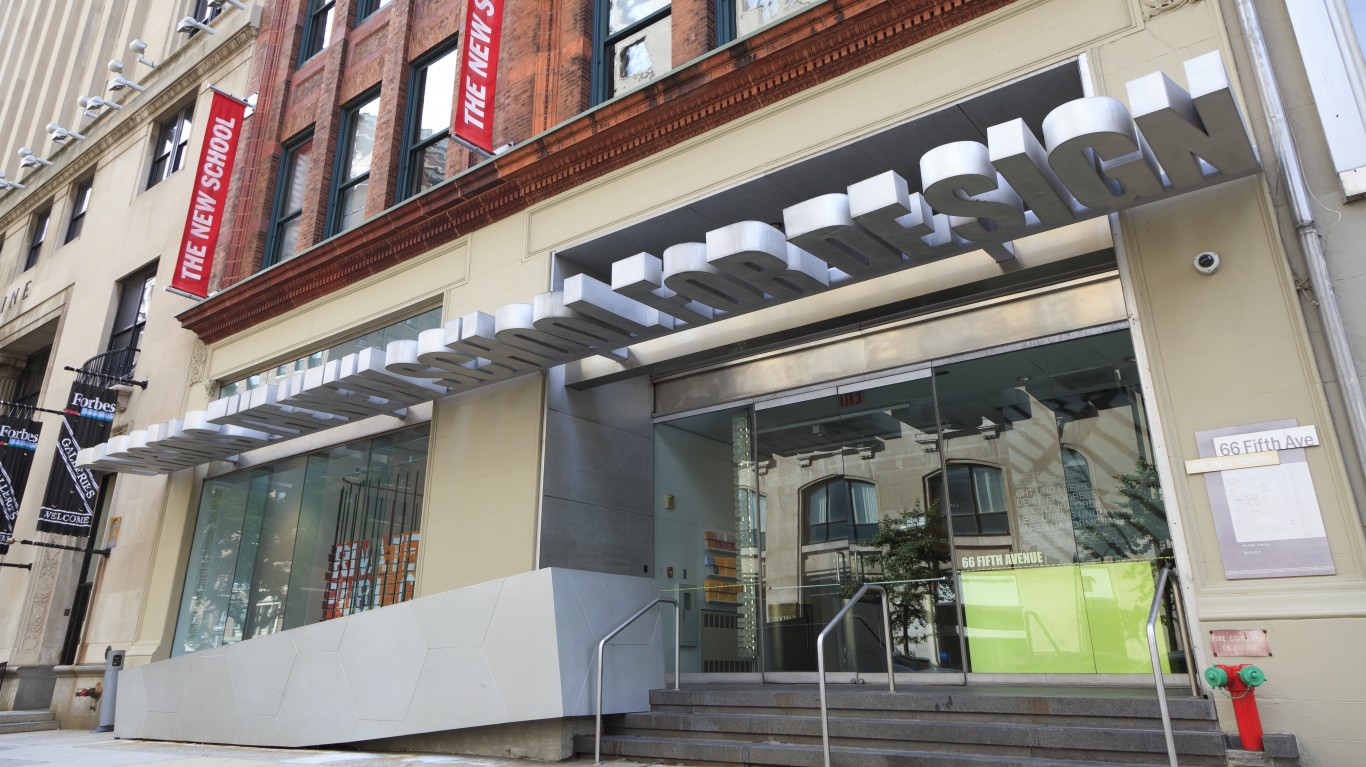
New York: School of Visual Arts
> Avg. annual net price: $53,227
> Admission rate: 71.5%
> Fall 2020 undergraduate enrollment: 3,192
> Median annual earnings 6 yrs. post graduation: $41,800
> Located: New York, NY
[in-text-ad-2]
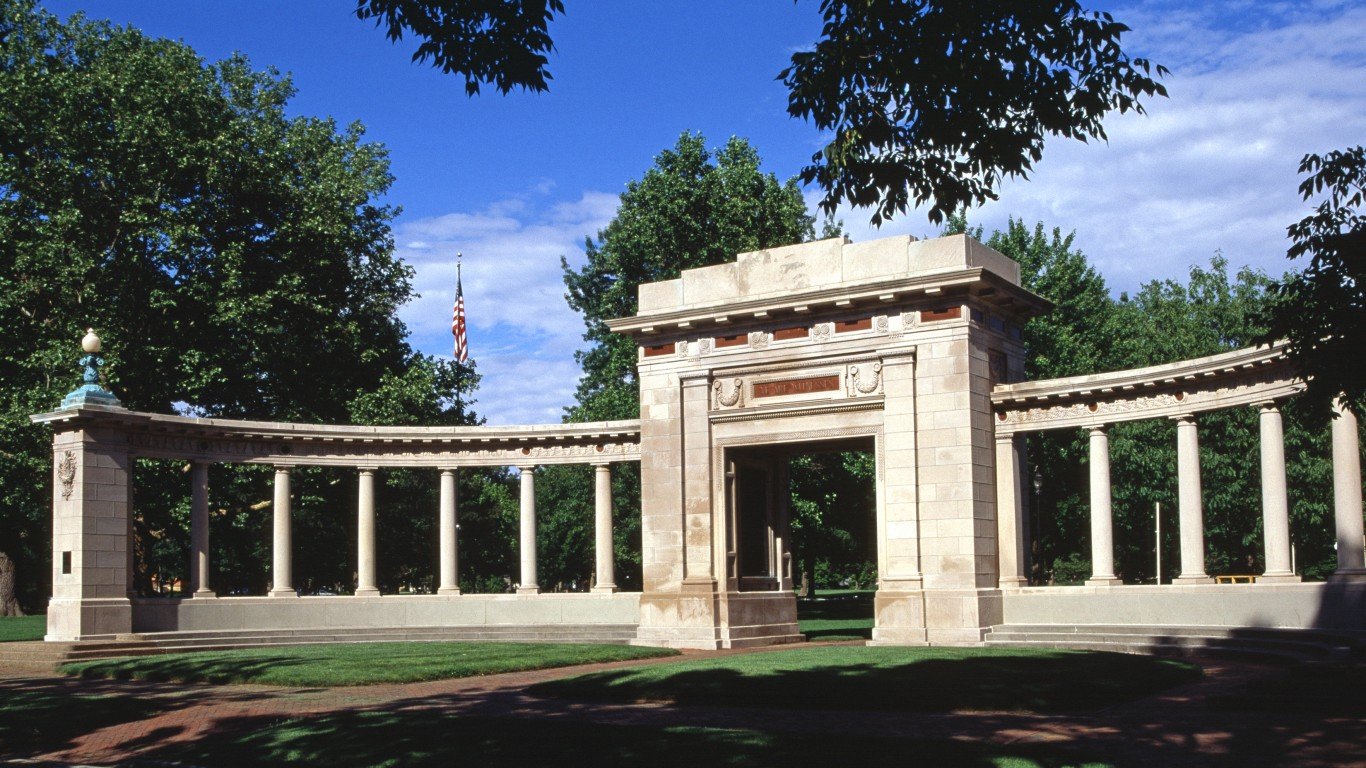
Ohio: Oberlin College
> Avg. annual net price: $42,745
> Admission rate: 35.4%
> Fall 2020 undergraduate enrollment: 2,647
> Median annual earnings 6 yrs. post graduation: $40,800
> Located: Oberlin, OH
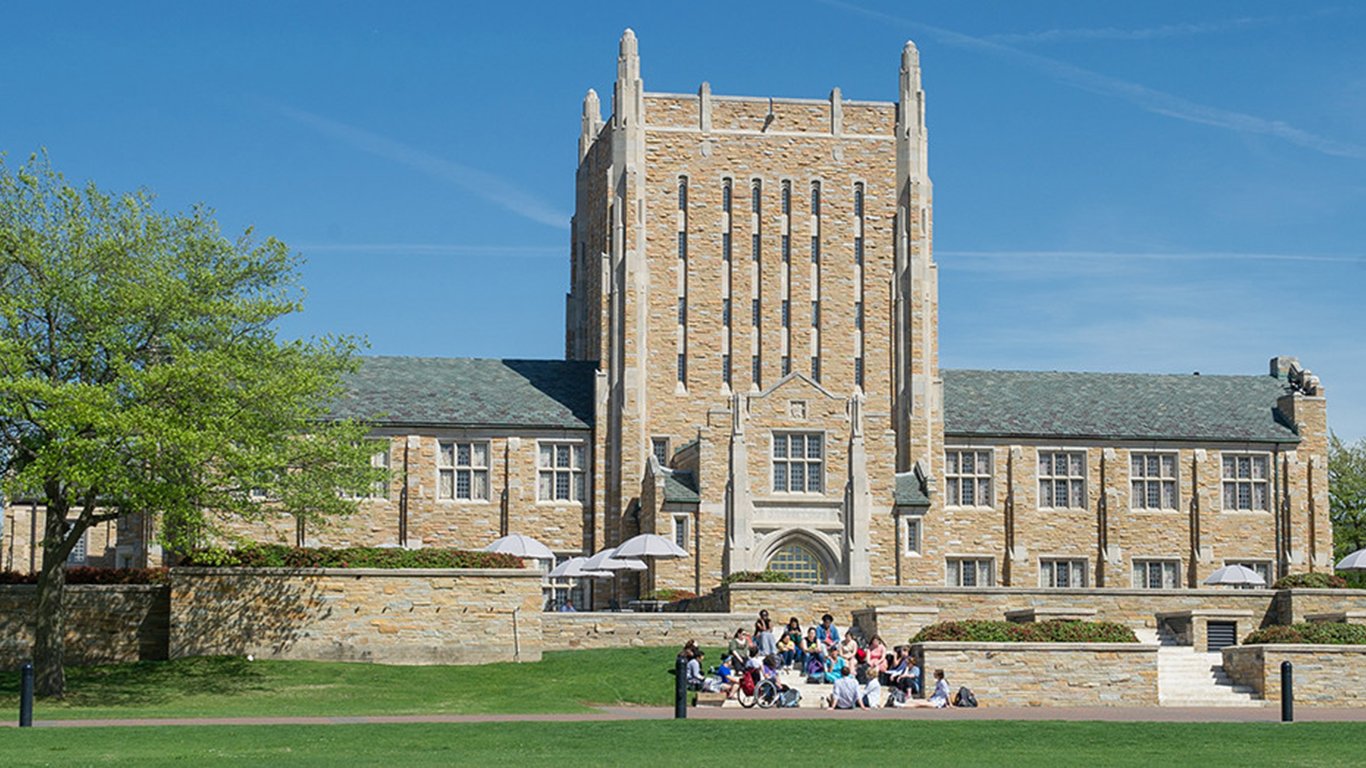
Oklahoma: University of Tulsa
> Avg. annual net price: $25,333
> Admission rate: 69.2%
> Fall 2020 undergraduate enrollment: 2,929
> Median annual earnings 6 yrs. post graduation: $48,500
> Located: Tulsa, OK
[in-text-ad]

Oregon: Willamette University
> Avg. annual net price: $37,913
> Admission rate: 80.2%
> Fall 2020 undergraduate enrollment: 1,302
> Median annual earnings 6 yrs. post graduation: $51,100
> Located: Salem, OR
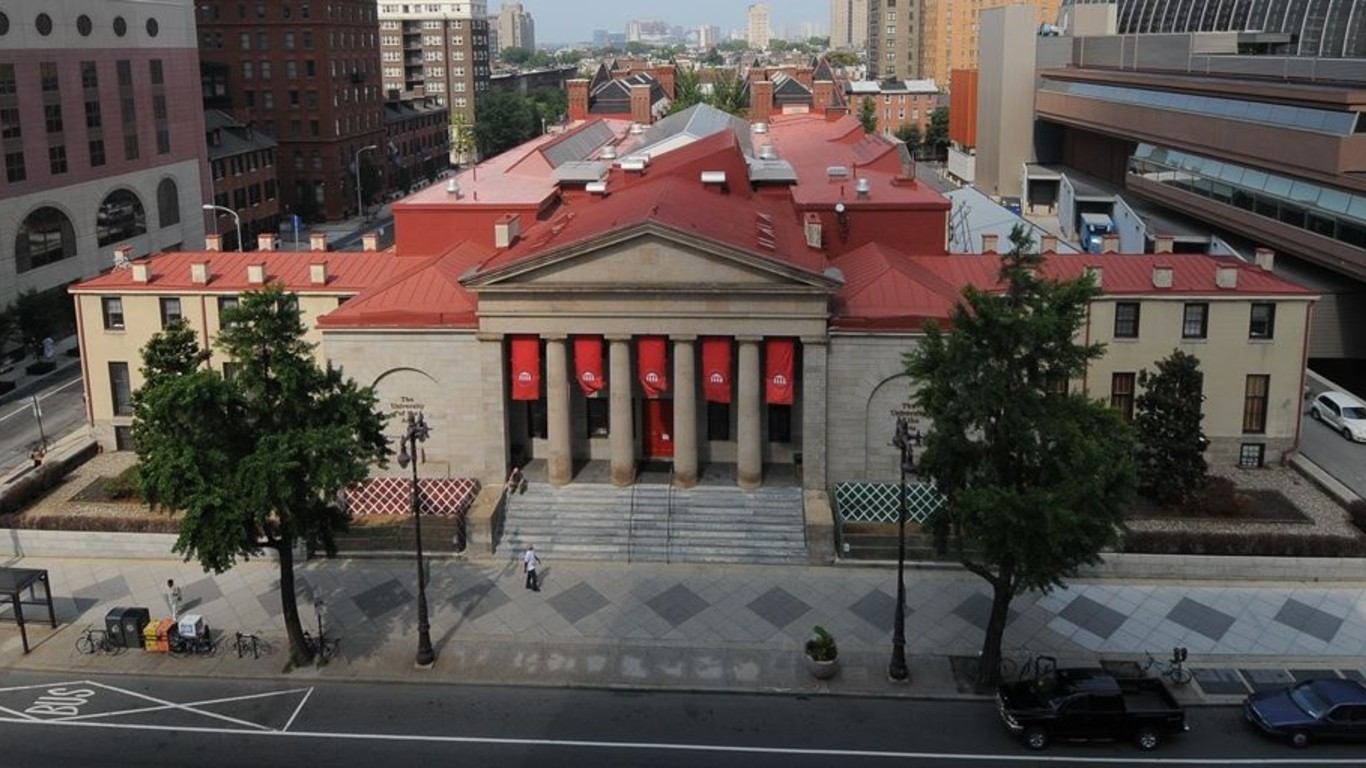
Pennsylvania: The University of the Arts
> Avg. annual net price: $40,269
> Admission rate: 75.8%
> Fall 2020 undergraduate enrollment: 1,380
> Median annual earnings 6 yrs. post graduation: $32,600
> Located: Philadelphia, PA

Rhode Island: Rhode Island School of Design
> Avg. annual net price: $40,048
> Admission rate: 27.1%
> Fall 2020 undergraduate enrollment: 1,736
> Median annual earnings 6 yrs. post graduation: $51,100
> Located: Providence, RI
[in-text-ad-2]
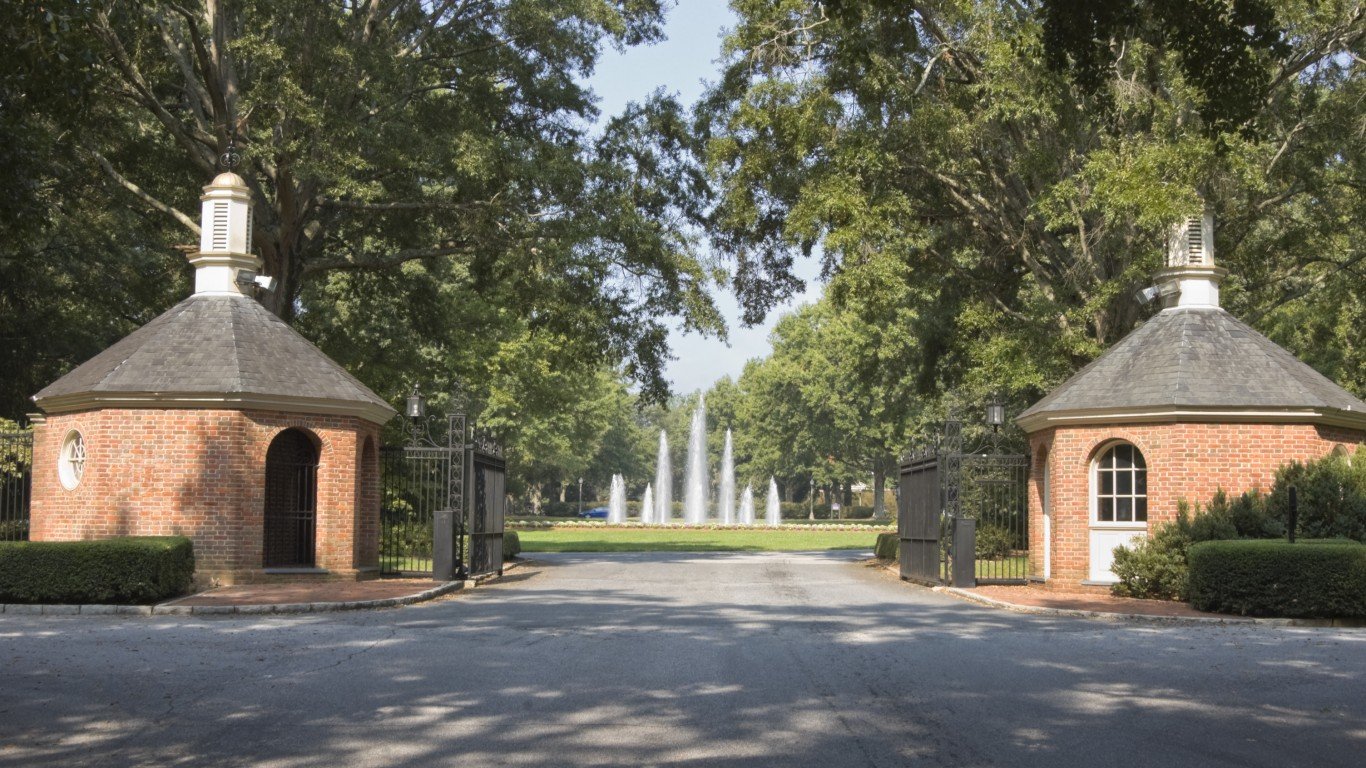
South Carolina: Furman University
> Avg. annual net price: $37,761
> Admission rate: 65.2%
> Fall 2020 undergraduate enrollment: 2,345
> Median annual earnings 6 yrs. post graduation: $51,200
> Located: Greenville, SC
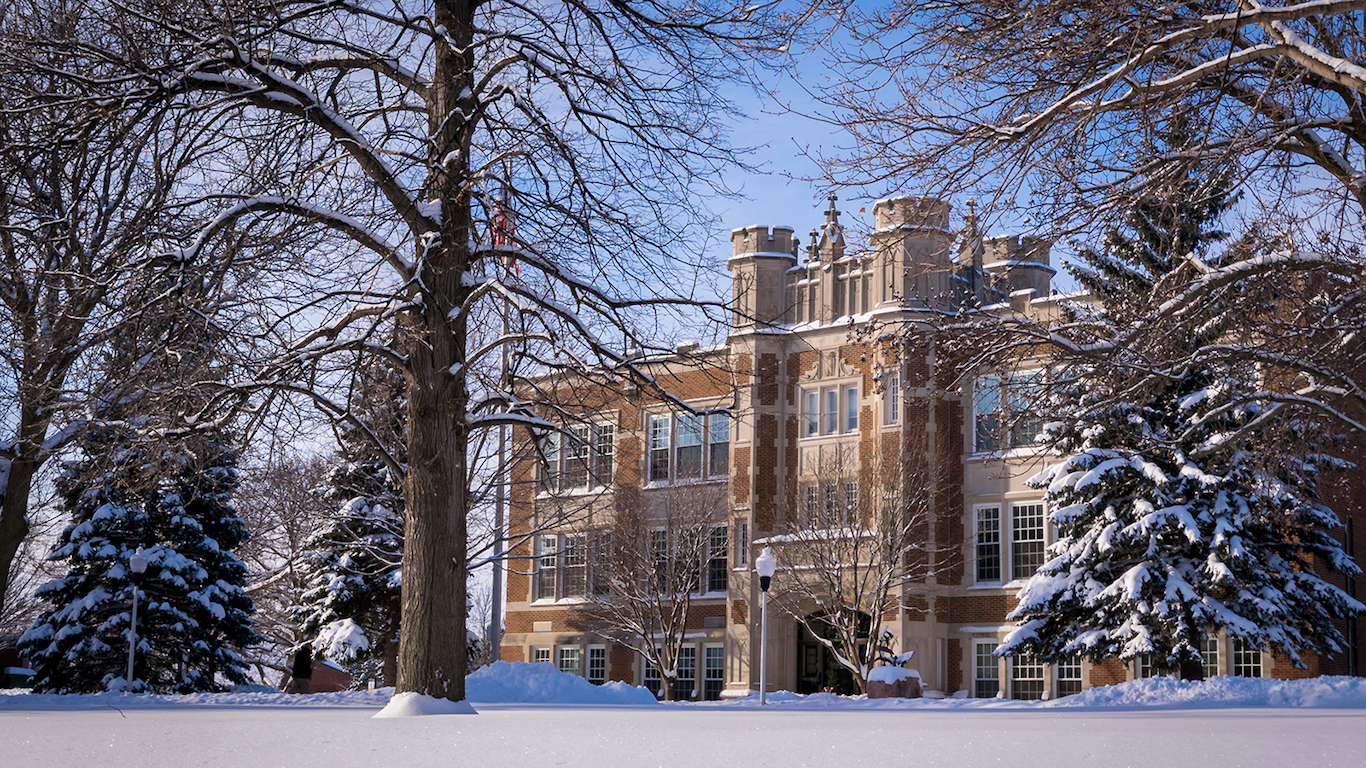
South Dakota: Augustana University
> Avg. annual net price: $24,322
> Admission rate: 71.4%
> Fall 2020 undergraduate enrollment: 1,735
> Median annual earnings 6 yrs. post graduation: $43,700
> Located: Sioux Falls, SD
[in-text-ad]
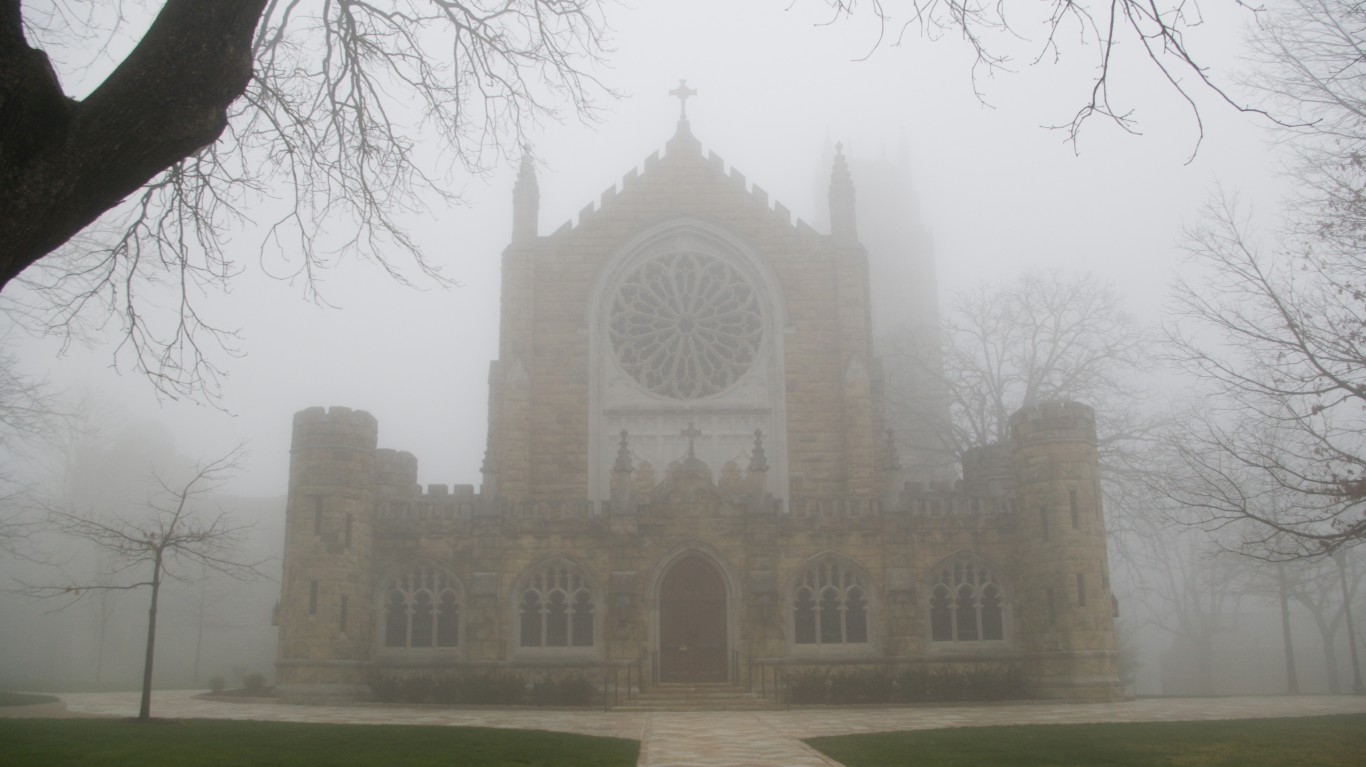
Tennessee: The University of the South
> Avg. annual net price: $36,244
> Admission rate: 56.1%
> Fall 2020 undergraduate enrollment: 1,716
> Median annual earnings 6 yrs. post graduation: $45,500
> Located: Sewanee, TN
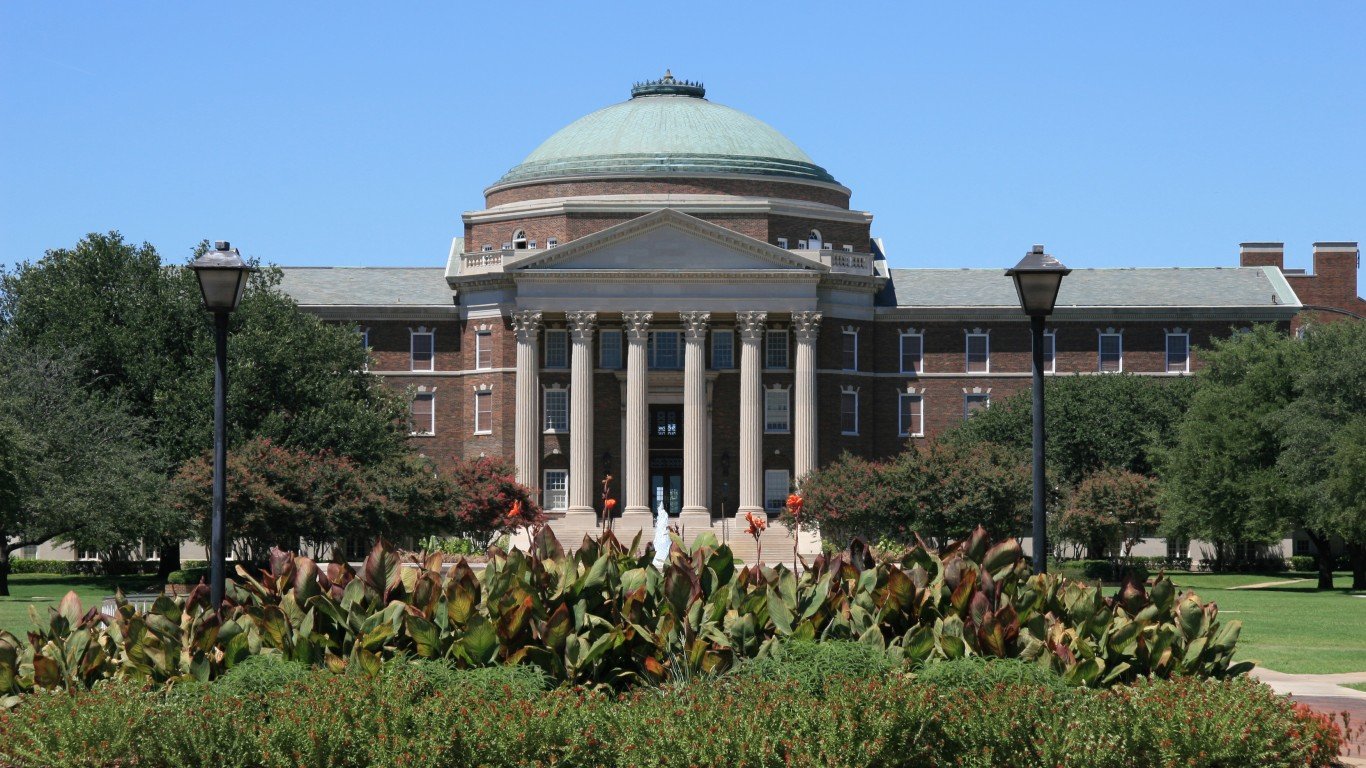
Texas: Southern Methodist University
> Avg. annual net price: $41,444
> Admission rate: 52.7%
> Fall 2020 undergraduate enrollment: 6,827
> Median annual earnings 6 yrs. post graduation: $60,700
> Located: Dallas, TX
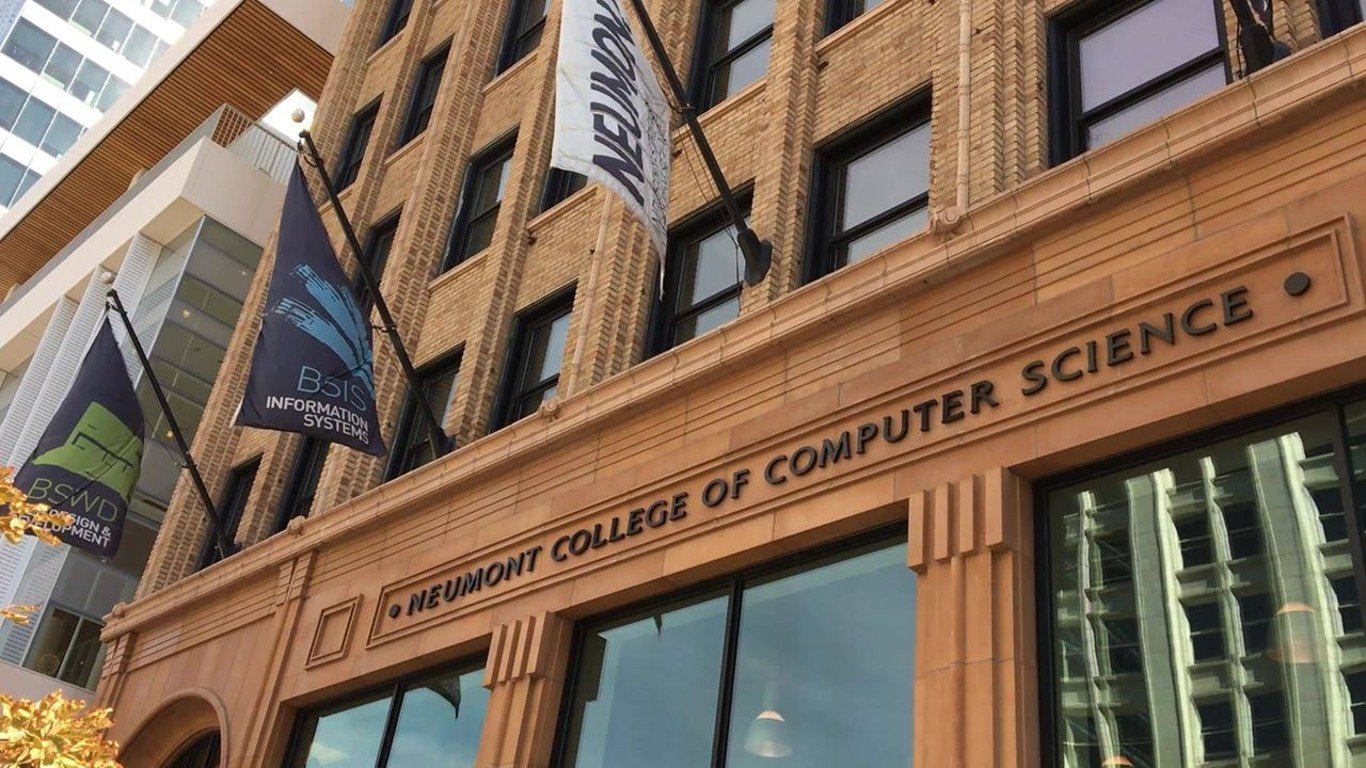
Utah: Neumont College of Computer Science
> Avg. annual net price: $28,097
> Admission rate: 90.7%
> Fall 2020 undergraduate enrollment: 529
> Median annual earnings 6 yrs. post graduation: $69,400
> Located: Salt Lake City, UT
[in-text-ad-2]
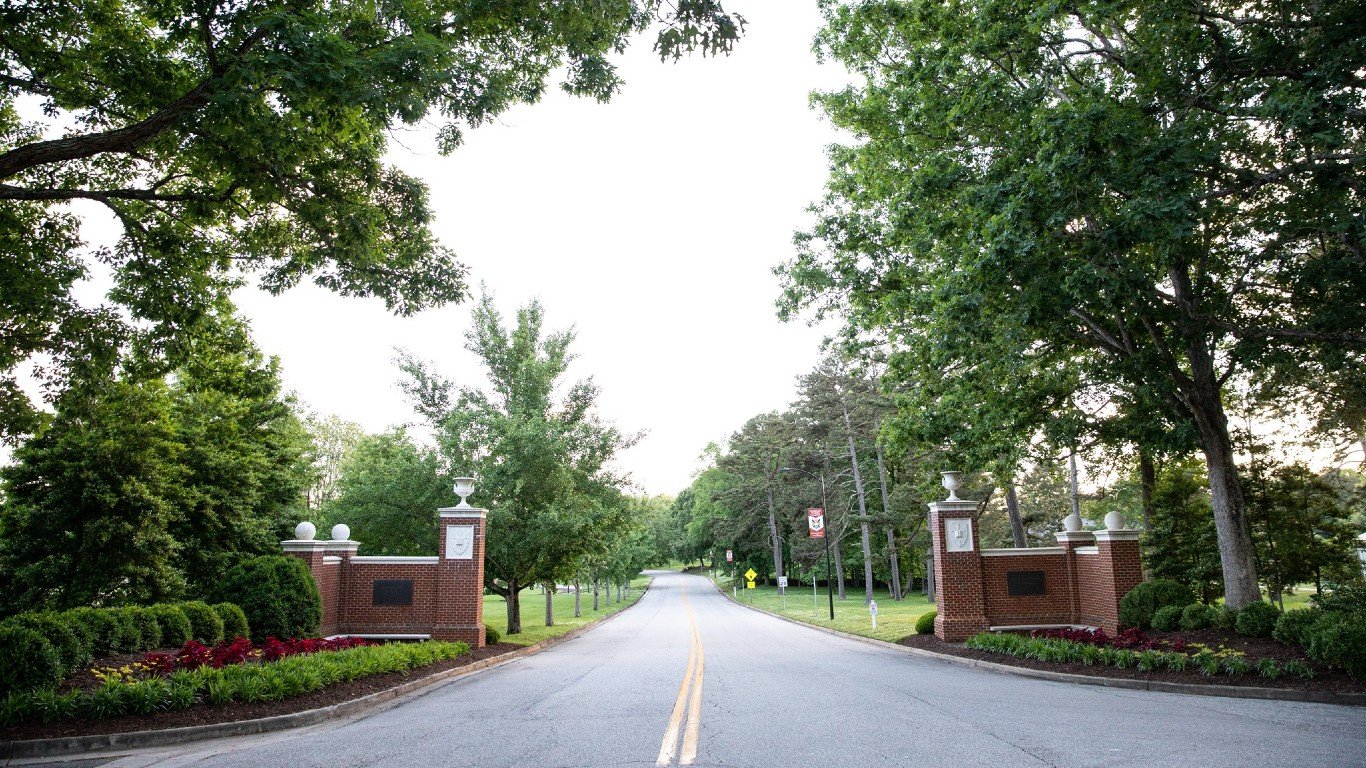
Virginia: Hampden-Sydney College
> Avg. annual net price: $33,331
> Admission rate: 47.0%
> Fall 2020 undergraduate enrollment: 881
> Median annual earnings 6 yrs. post graduation: $52,200
> Located: Hampden-Sydney, VA
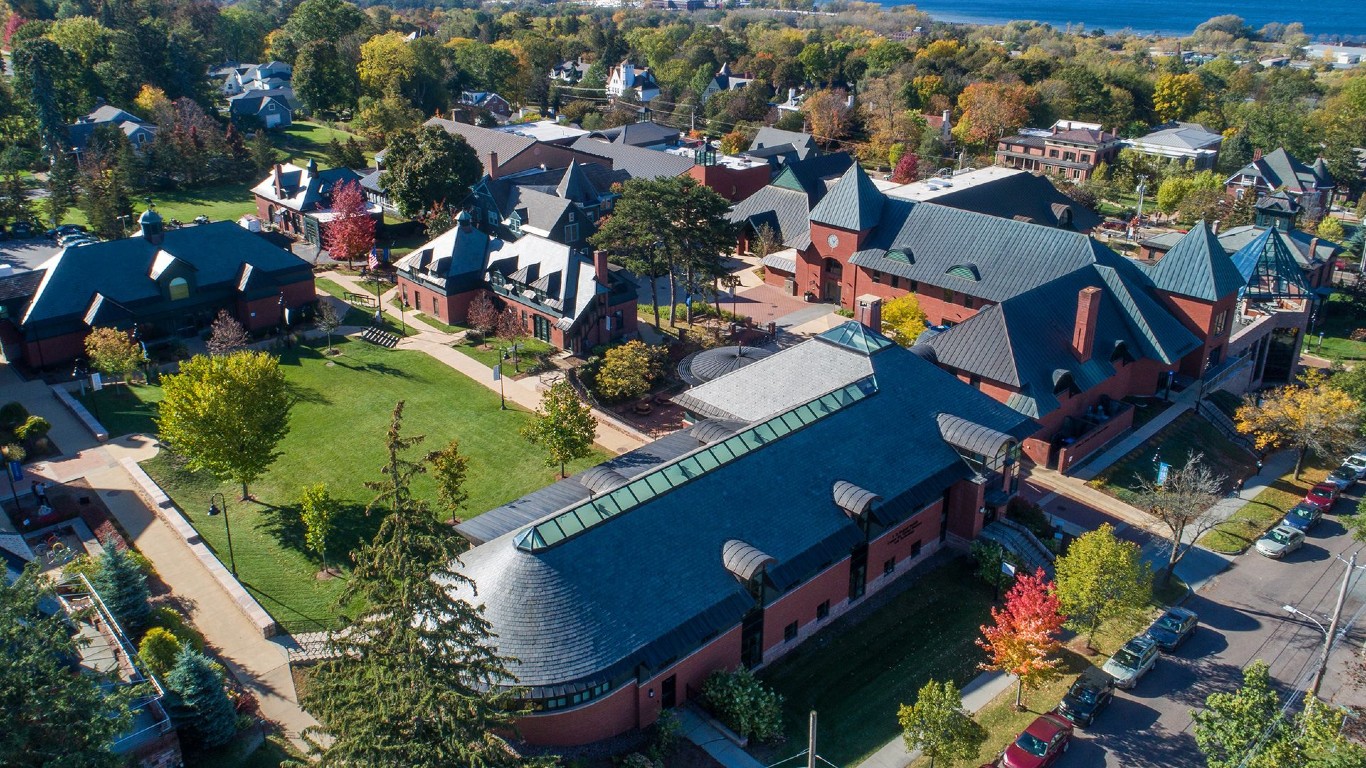
Vermont: Champlain College
> Avg. annual net price: $35,870
> Admission rate: 85.2%
> Fall 2020 undergraduate enrollment: 3,512
> Median annual earnings 6 yrs. post graduation: $45,400
> Located: Burlington, VT
[in-text-ad]

Washington: Cornish College of the Arts
> Avg. annual net price: $39,440
> Admission rate: 78.9%
> Fall 2020 undergraduate enrollment: 482
> Median annual earnings 6 yrs. post graduation: $29,100
> Located: Seattle, WA
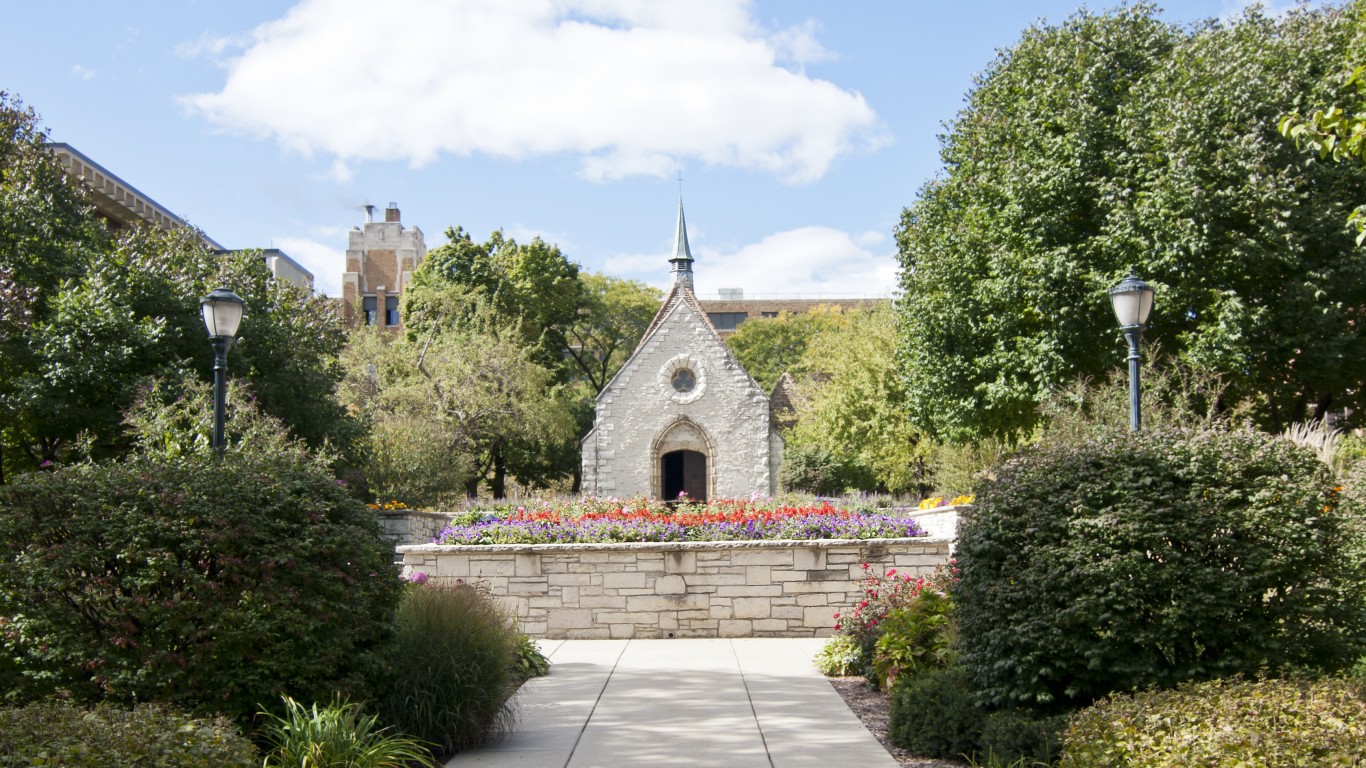
Wisconsin: Marquette University
> Avg. annual net price: $34,732
> Admission rate: 82.5%
> Fall 2020 undergraduate enrollment: 8,024
> Median annual earnings 6 yrs. post graduation: $62,600
> Located: Milwaukee, WI
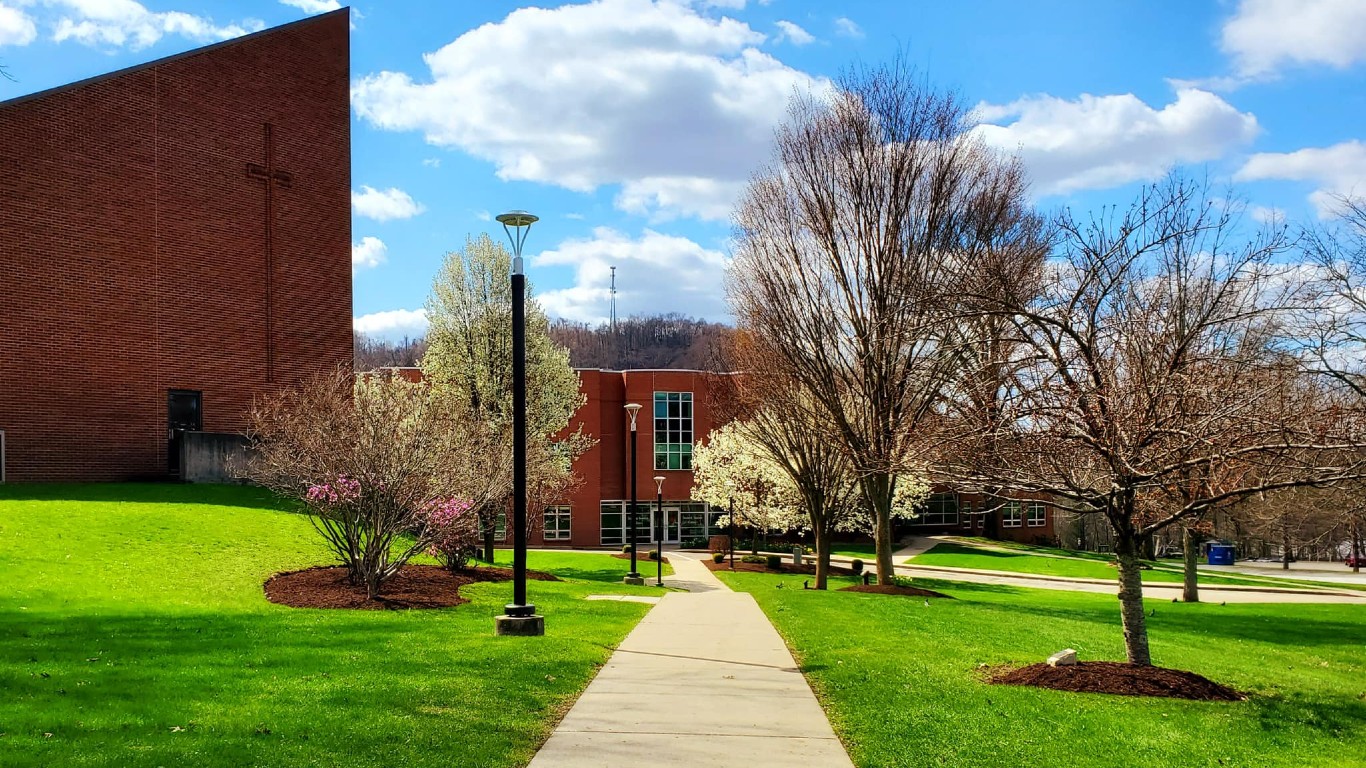
West Virginia: Wheeling University
> Avg. annual net price: $30,366
> Admission rate: 76.8%
> Fall 2020 undergraduate enrollment: 582
> Median annual earnings 6 yrs. post graduation: $46,200
> Located: Wheeling, WV
[in-text-ad-2]
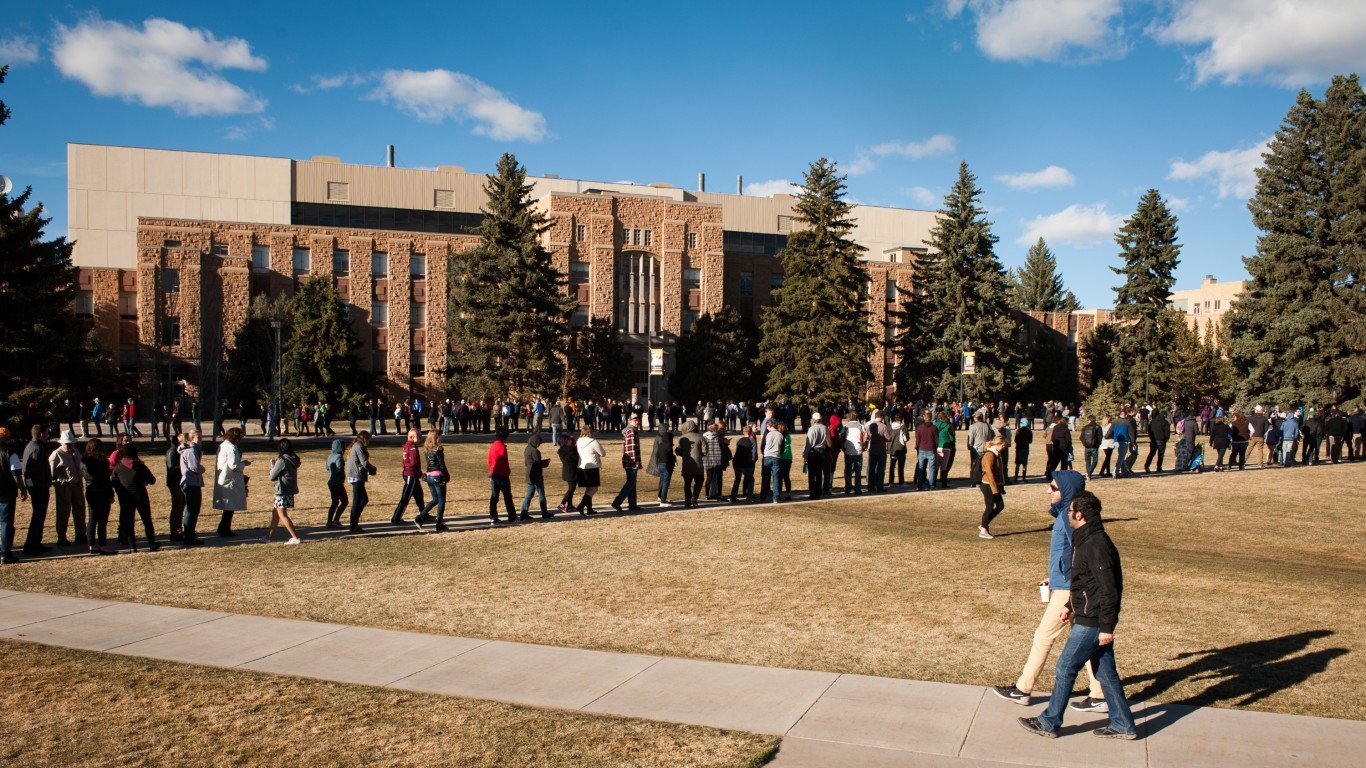
Wyoming: University of Wyoming
> Avg. annual net price: $12,224
> Admission rate: 94.2%
> Fall 2020 undergraduate enrollment: 9,342
> Median annual earnings 6 yrs. post graduation: $47,300
> Located: Laramie, WY
Sponsored: Find a Qualified Financial Advisor
Finding a qualified financial advisor doesn’t have to be hard. SmartAsset’s free tool matches you with up to 3 fiduciary financial advisors in your area in 5 minutes. Each advisor has been vetted by SmartAsset and is held to a fiduciary standard to act in your best interests. If you’re ready to be matched with local advisors that can help you achieve your financial goals, get started now.
Thank you for reading! Have some feedback for us?
Contact the 24/7 Wall St. editorial team.
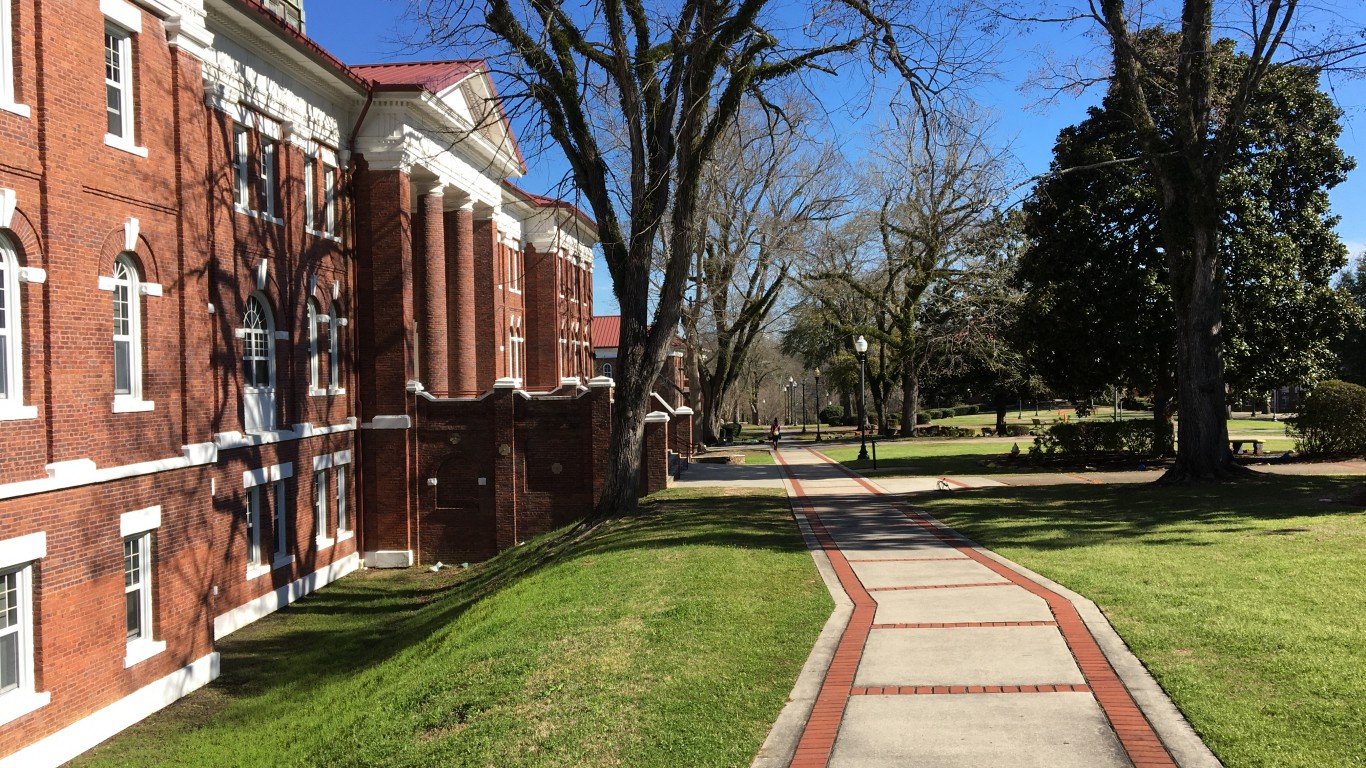
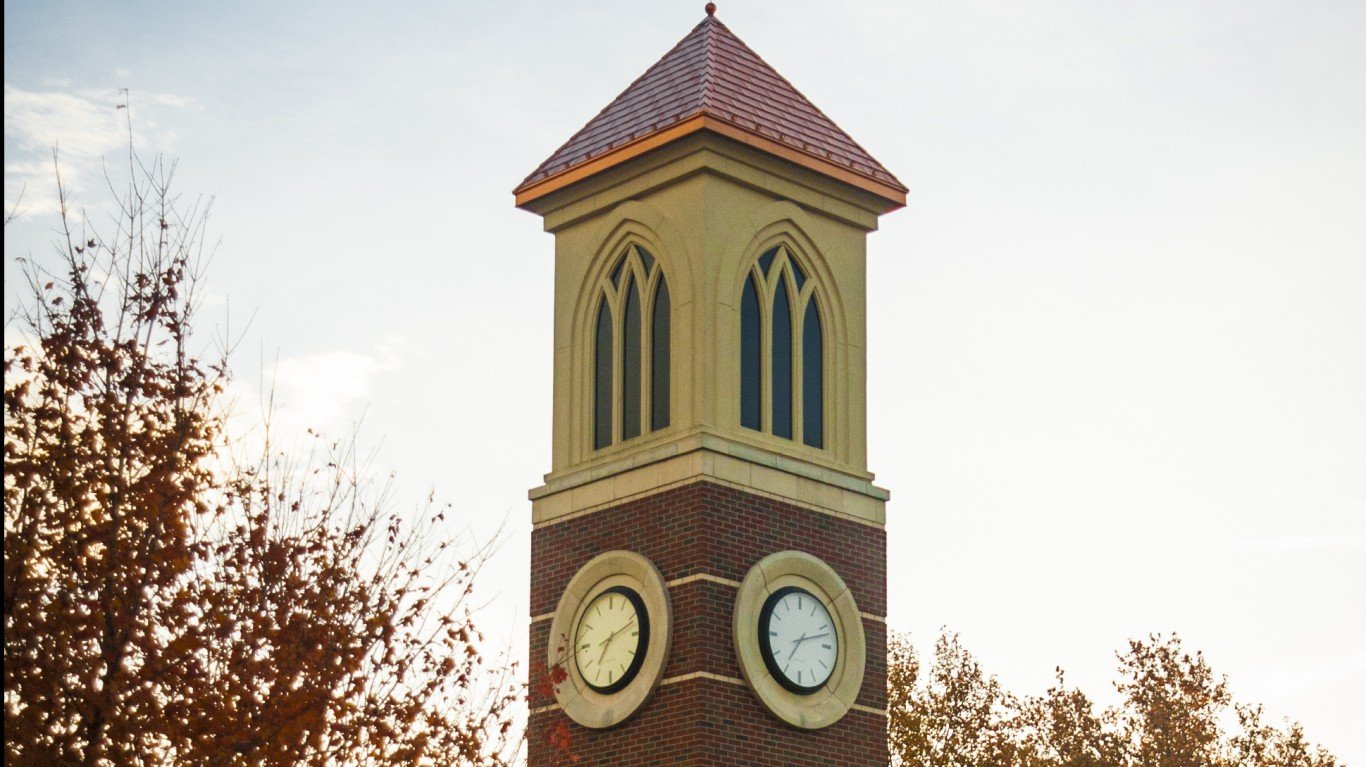
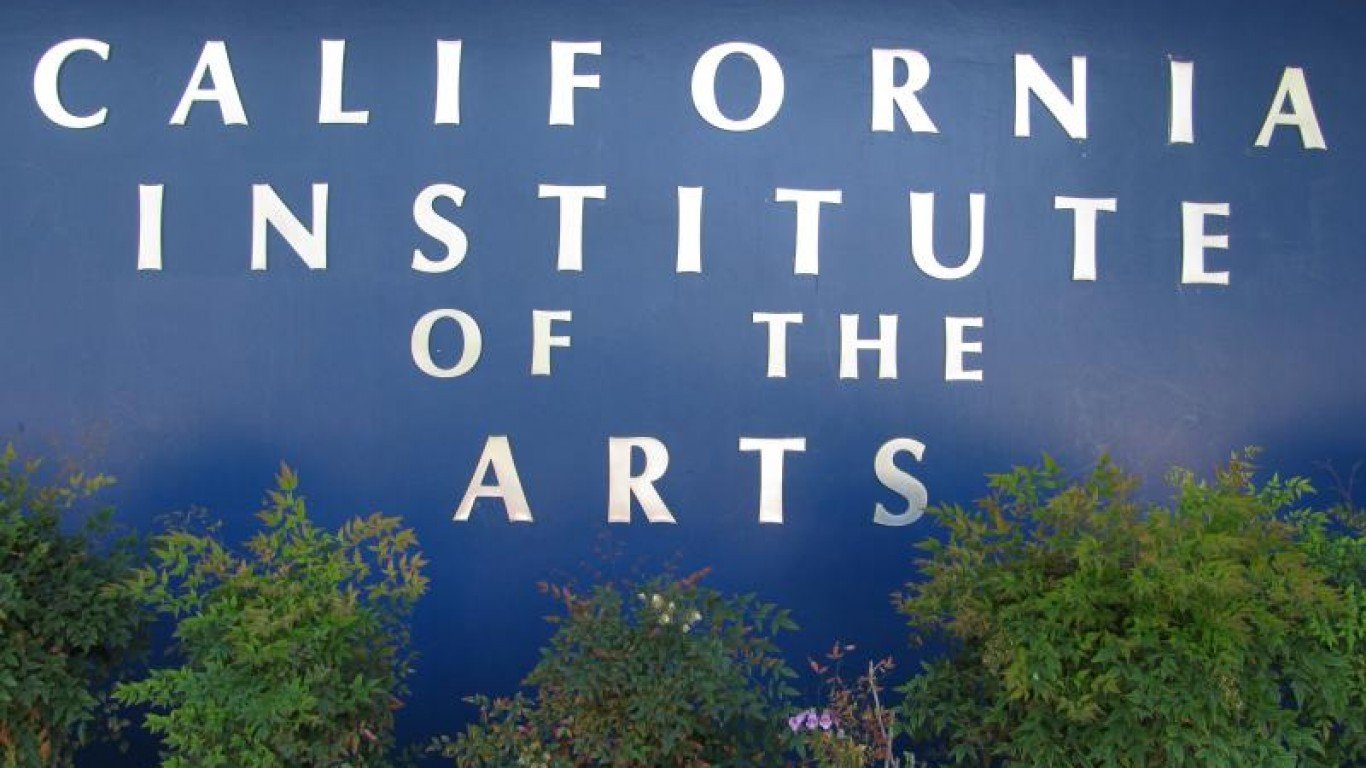
 24/7 Wall St.
24/7 Wall St.
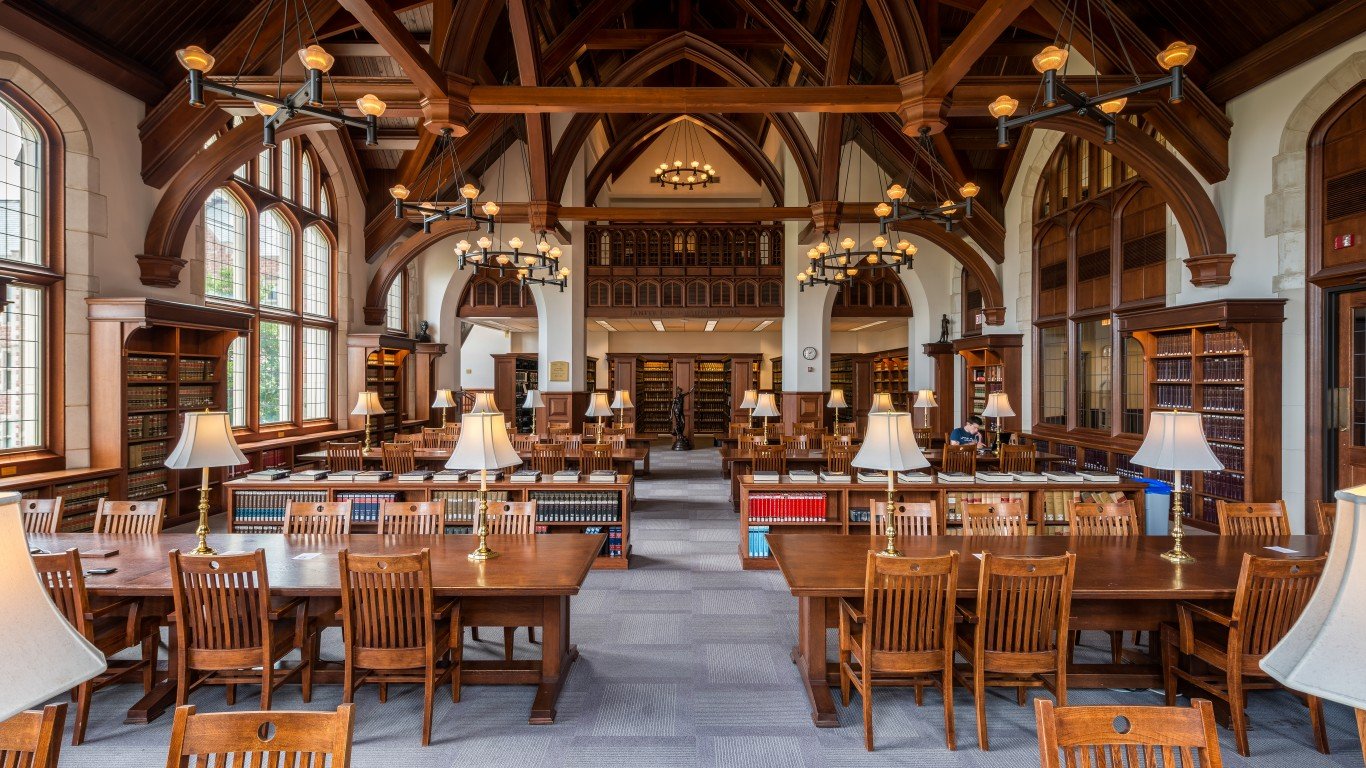 24/7 Wall St.
24/7 Wall St.
 24/7 Wall St.
24/7 Wall St.


